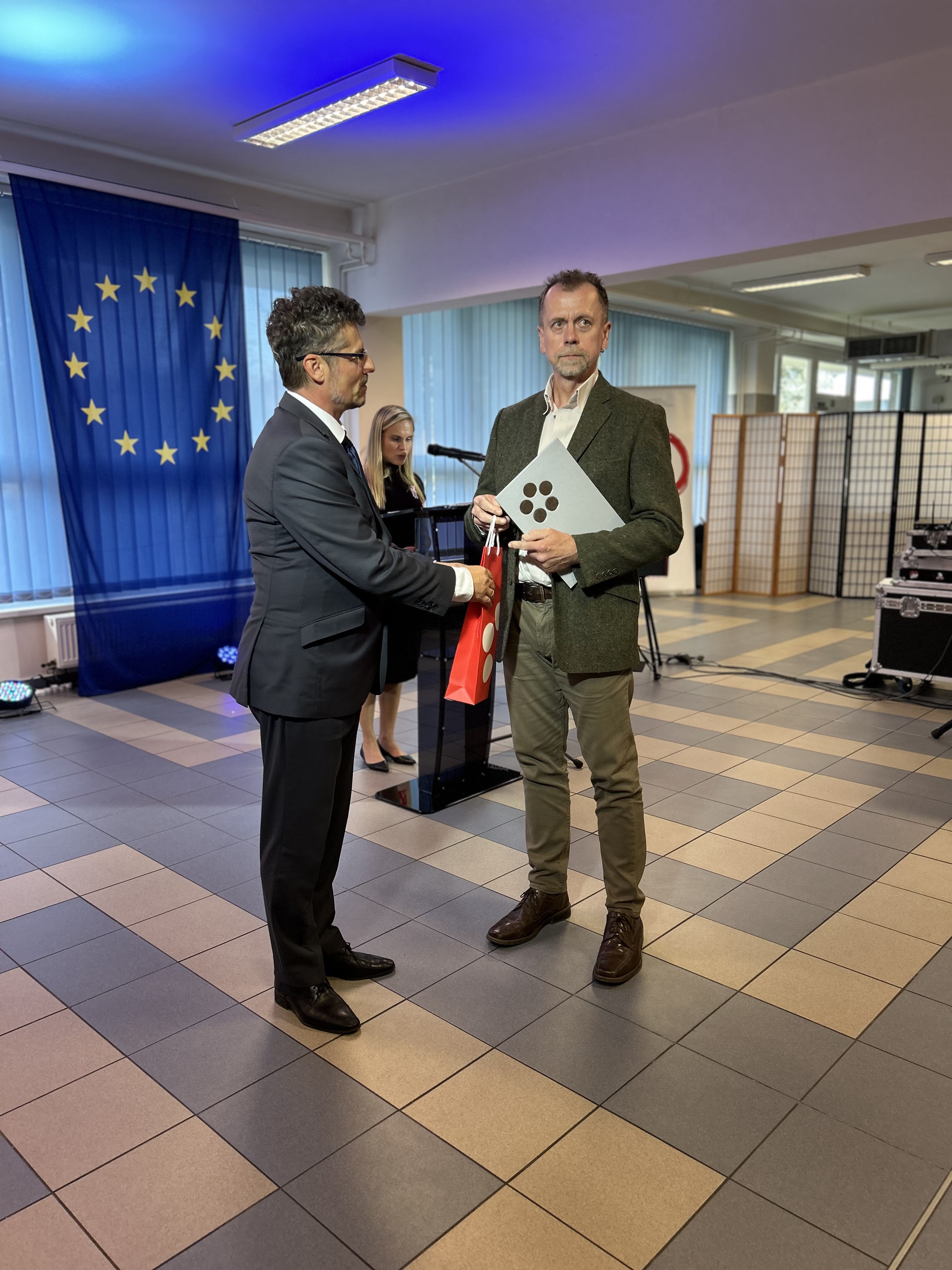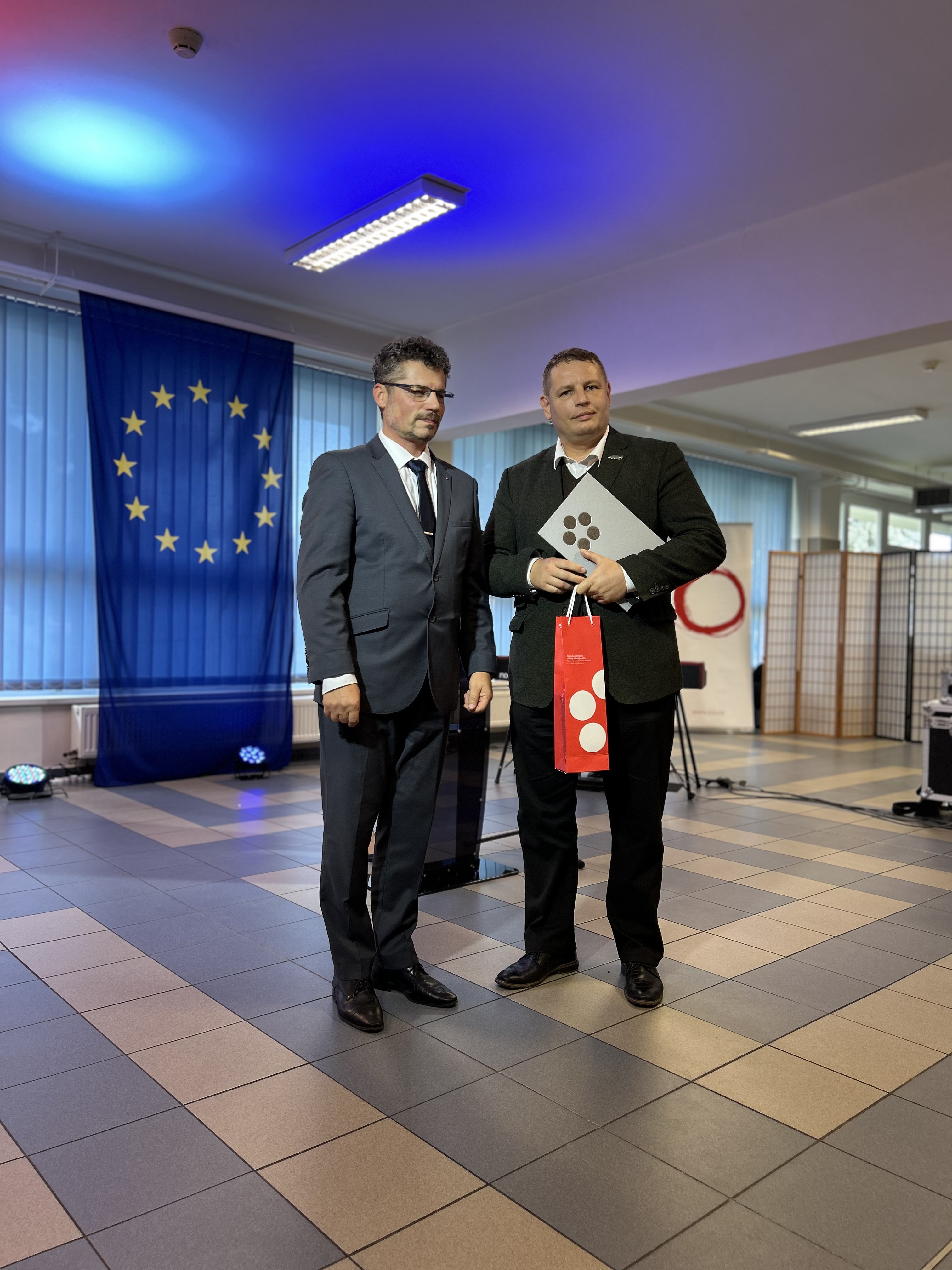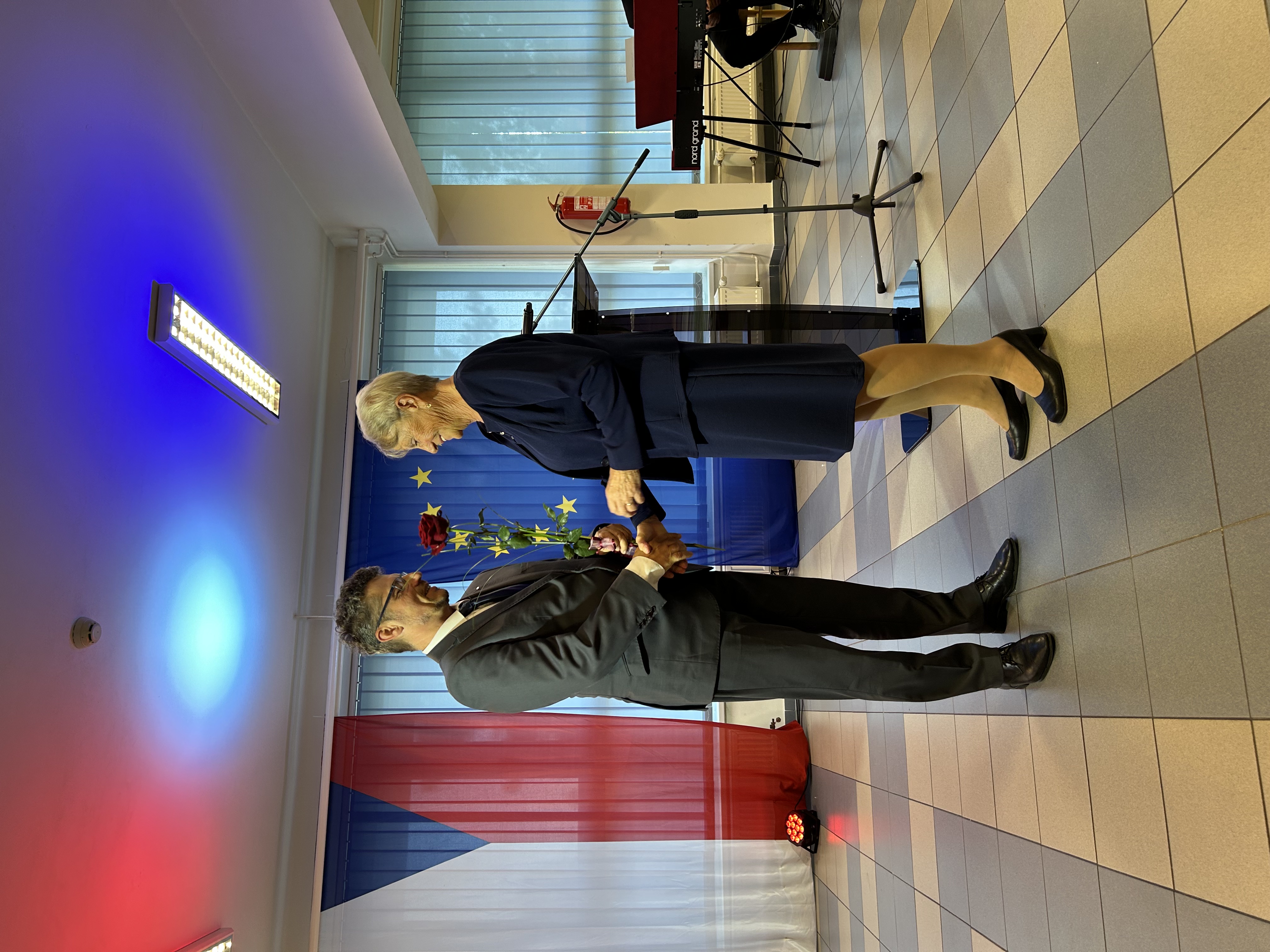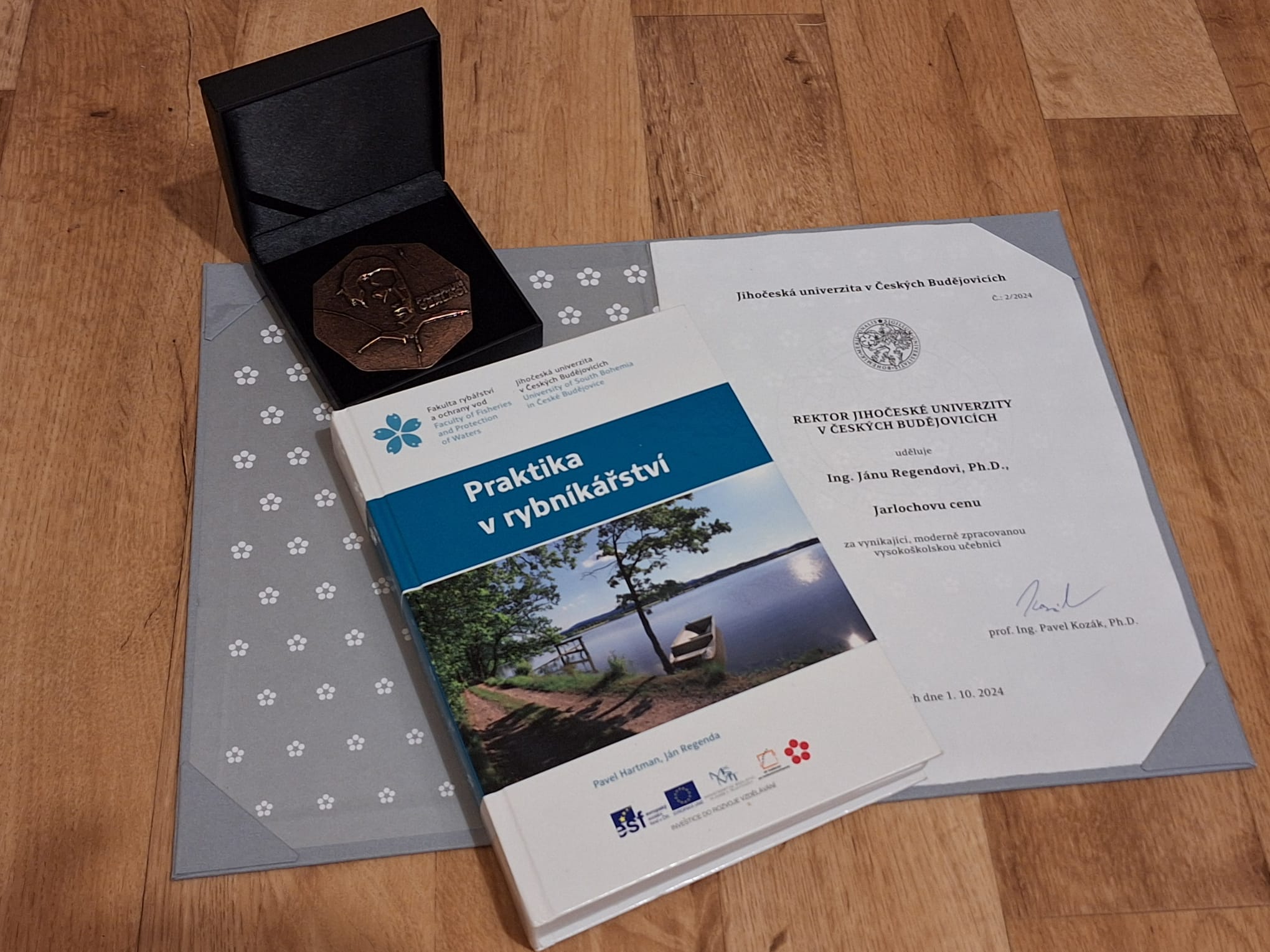- Fotogalerie:
- Foto:
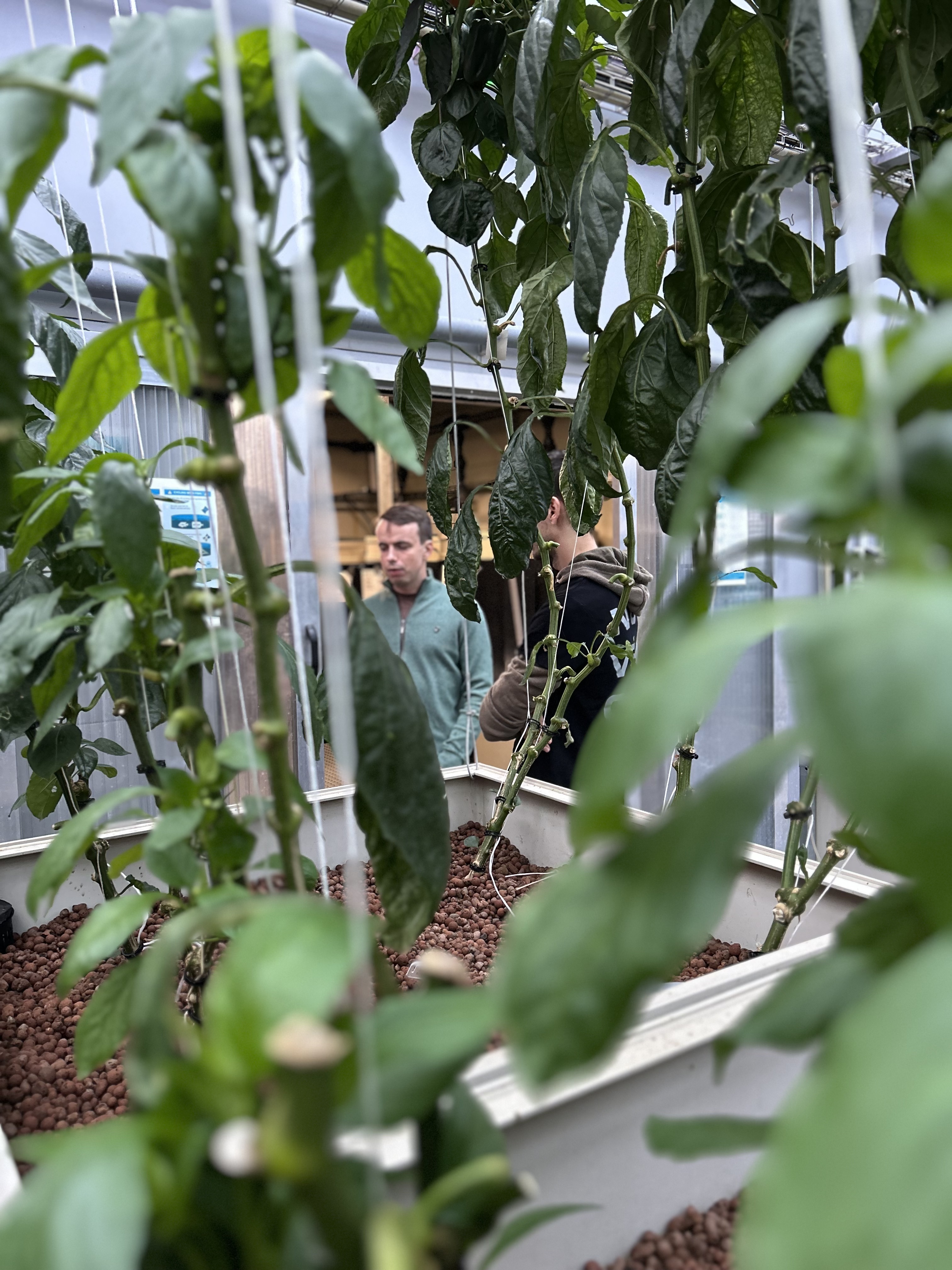
- Foto:
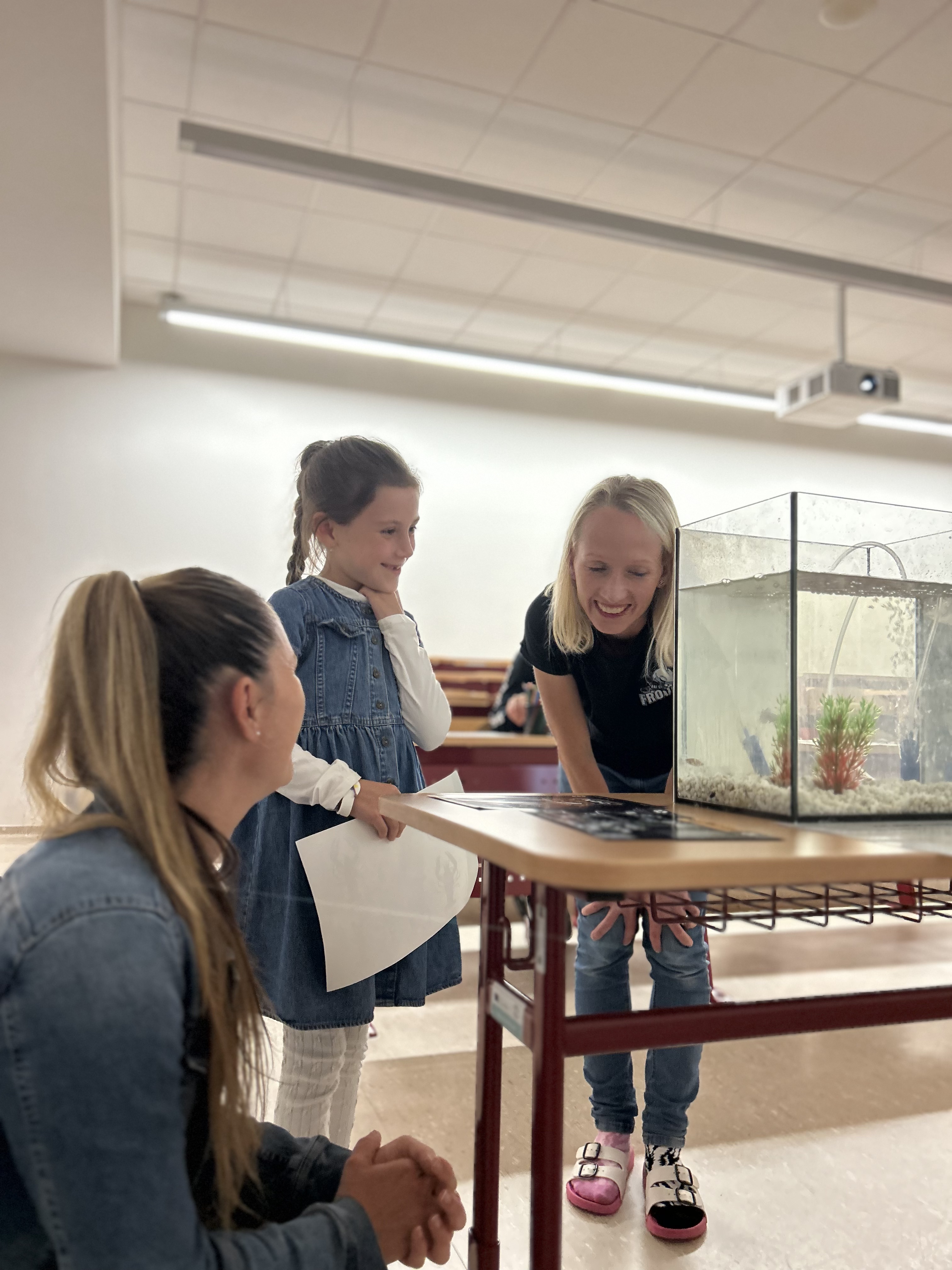
- Foto:
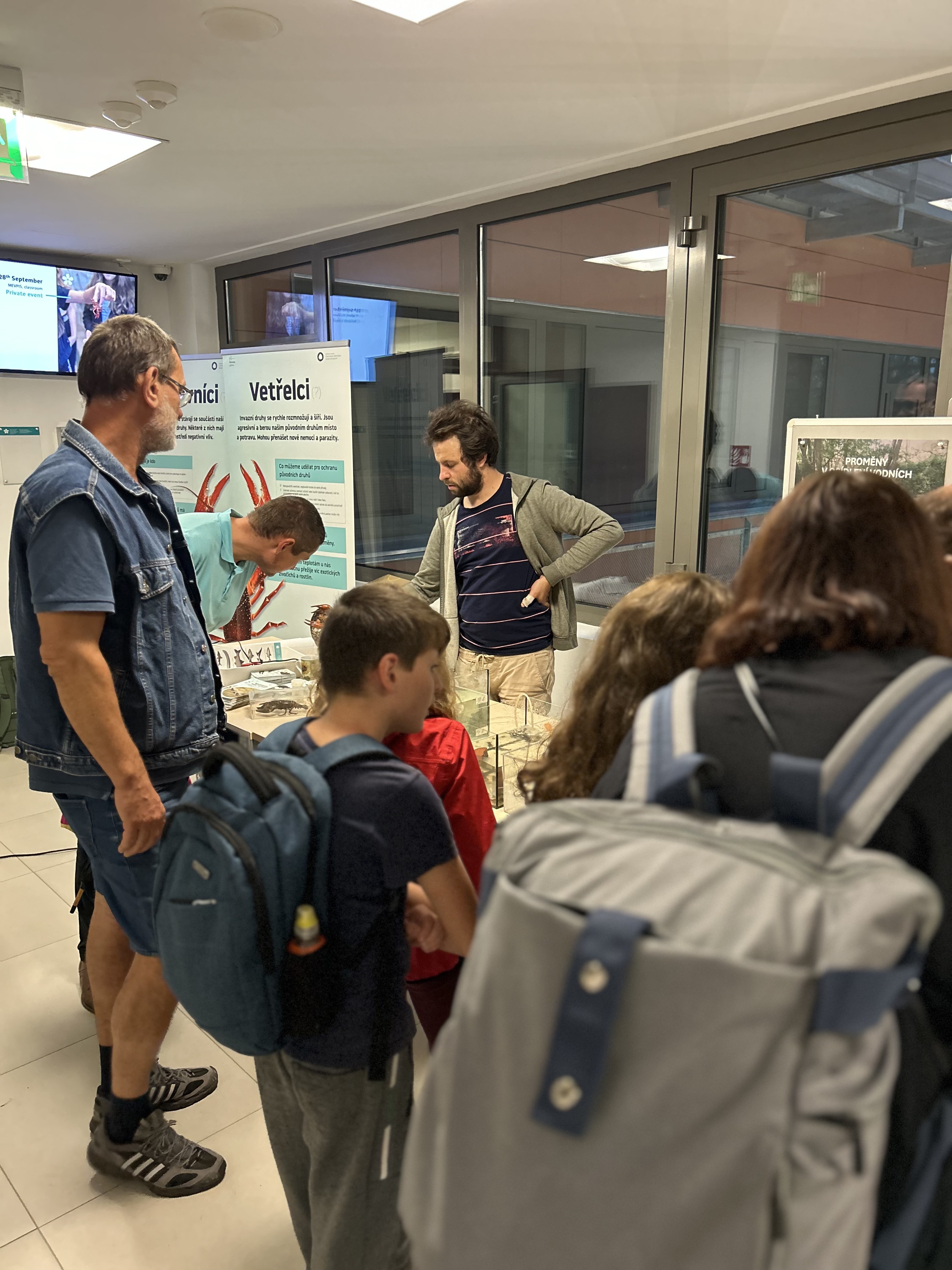
- Foto:
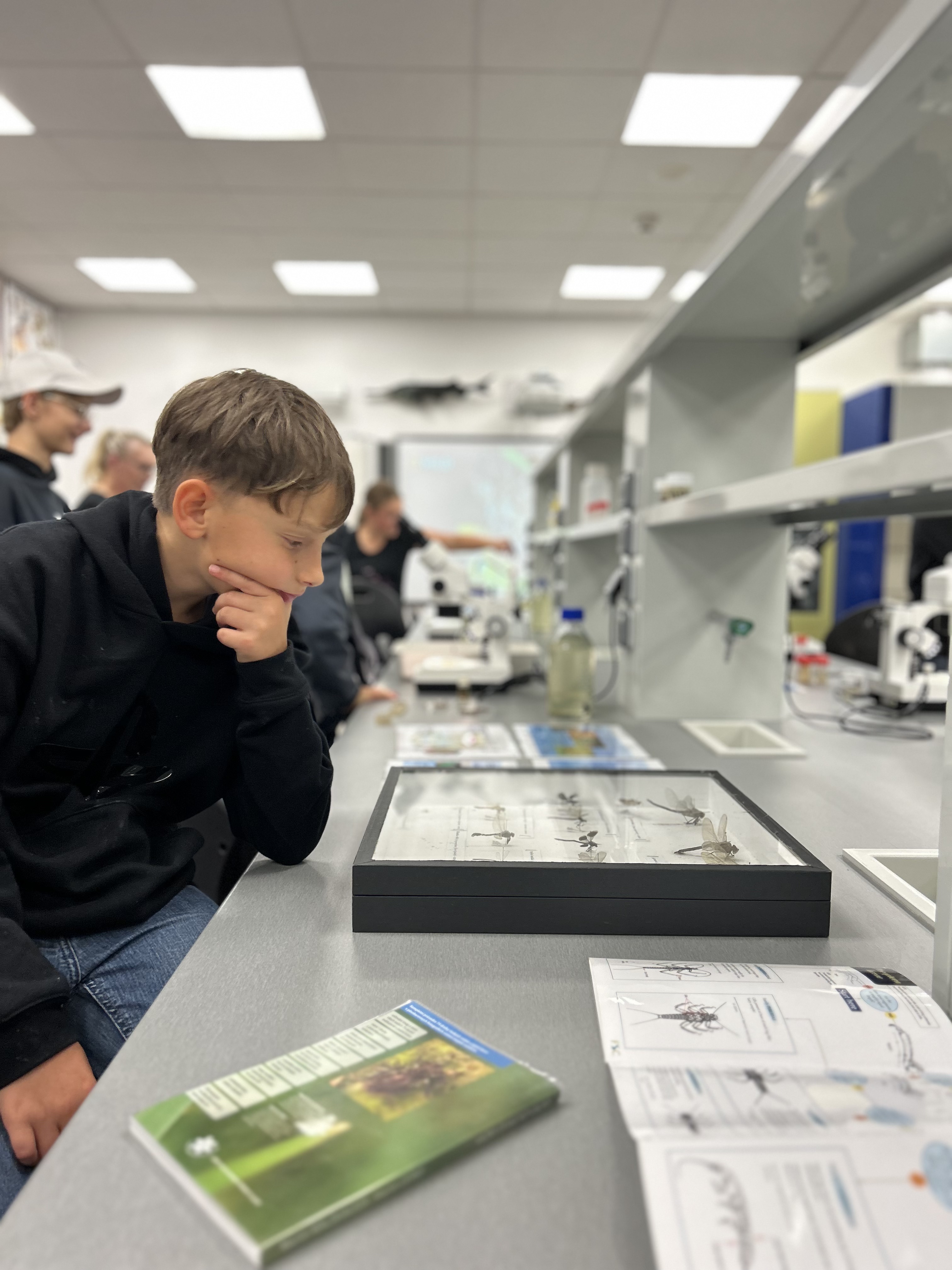
- Foto:
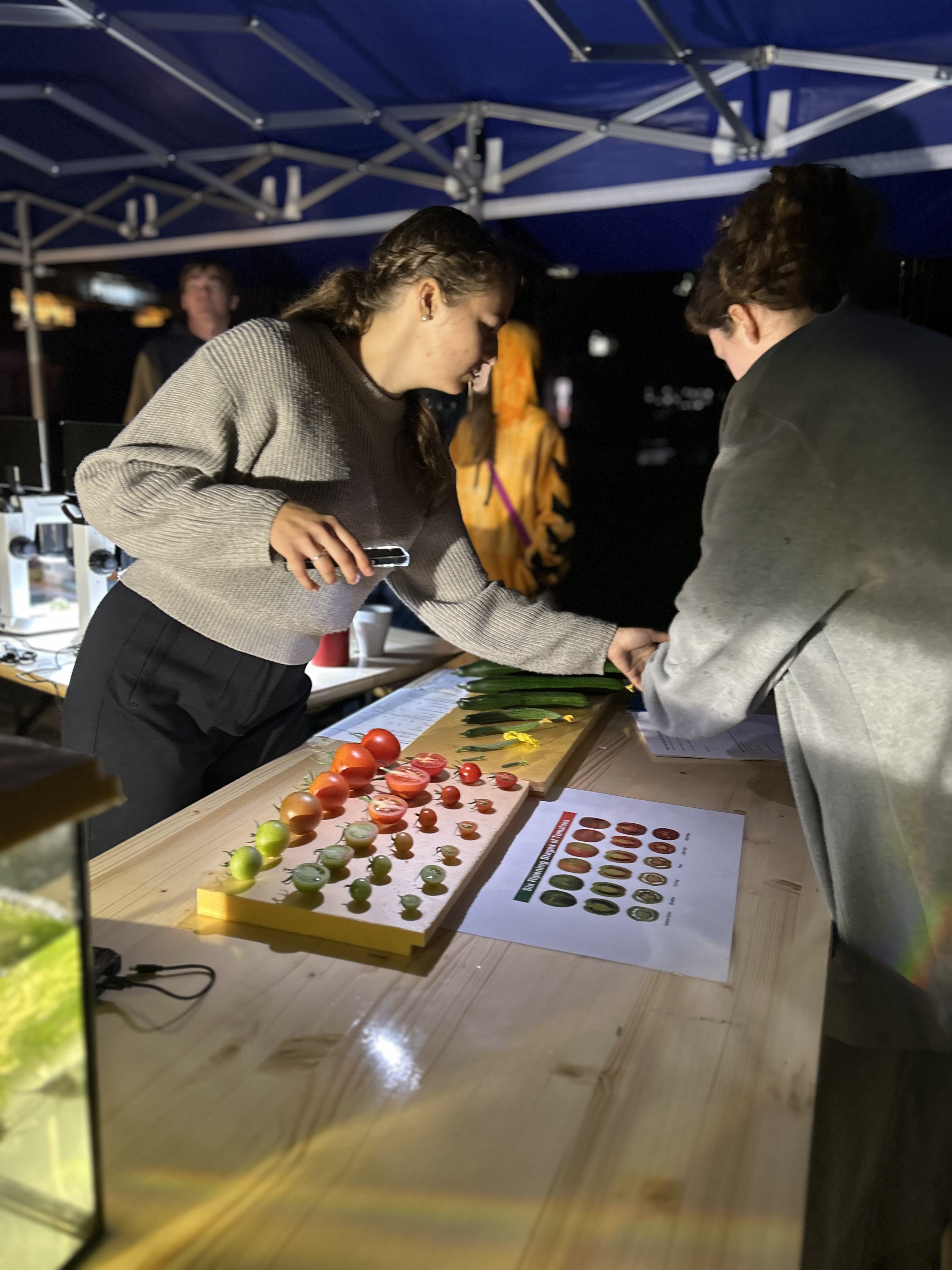
Noc vědců, jejímž tématem se stala proměna, přiblížila veřejnosti vědu a výzkum na všech osmi fakultách Jihočeské univerzity. Fakulta rybářství a ochrany vod JU připravila pro své návštěvníky interaktivní program v kampusu Jihočeské univerzity v Českých Budějovicích a také v Nových Hradech.
Malí i velcí objevovali kouzlo vody při pokusech, zkoušeli různé techniky lovu ryb nebo zblízka poznávali svět řek, rybníků, říčních niv prostřednictvím interaktivních modelů. Velkým lákadlem se tradičně staly ukázky živých organismů např. nepůvodních druhů zástupců račí říše nebo málo známých drobných rybek – halančíků tyrkysových (Nothobranchius furzeri), jejichž hlavní předností je přežití v extrémních podmínkách, a to hlavně díky embryím, která mohou kompletně vyschnout a v tomto stádiu přečkat i dlouhotrvající období sucha.
Největším lákadlem se bezpochyby stala výroba vlastní zmrzliny. Akvaponický skleník, fialově zářící ve tmě, přilákal na komentované prohlídky přes 400 lidí, což je rekordní návštěvnost. Děti si domů mohly odnést vlastnoručně vysazenou bazalku anebo masožravku.
Noc vědců přilákala i přes nepříznivé počasí na Jihočeskou univerzitu přes 3200 návštěvníků. Již nyní se těšíme na další ročník.
Foto a video z akce.
A new study, with significant contribution from researchers at the Faculty of Fisheries and Protection of Waters at the University of South Bohemia, reveals that more than a third of the world’s annual aquaculture production comes from species farmed outside their native ranges. The research, led by Francisco Oficialdegui of the University of South Bohemia in České Budějovice, was carried out in cooperation with an interdisciplinary international team of colleagues and focused on the global consequences of using non-native species in aquaculture. The study was published in the journal Reviews in Aquaculture.
Aquaculture is a fundamental pillar of global food production and makes a significant contribution to human nutrition, food security, and the employment of millions of people. However, its rapid expansion in recent decades has also led to the movement of species beyond their native ranges. “Although non-native farmed species are highly productive and significantly contribute to human nutrition, they also carry environmental and socioeconomic risks if they escape from aquaculture facilities and successfully establish themselves in new environments,” says Oficialdegui.
Globally, since 1950, about one third of 560 species used in aquaculture (i.e. 160 species) have been farmed outside their native ranges. More than 80% of worldwide non-native species production comes from just ten countries – mostly in Asia. Fish dominate total aquaculture production (940 million tonnes), with non-native fish alone accounting for 182 million tonnes, or 19% of the total volume. The shares are even higher for non-native algae and crustaceans: 67% and 55%, respectively. Particularly striking is the more than 11,000% increase in non-native crustacean production since 2000 compared to the previous two decades, driven primarily by the farming of whiteleg shrimp and red swamp crayfish in non-native regions.
“This finding corresponds to the generally higher market value of crustaceans compared to fish and supports the idea that the motivation for farming crustaceans in aquaculture may now outweigh that for fish, as crustacean production is more associated with the economic security of farmers, whereas fish farming is typically linked to food security,” explains Francisco Oficialdegui.
The research team points out that many of these highly productive non-native species are associated with significant ecological and socioeconomic impacts. These include documented declines in native species populations, disruption of food webs, changes in nutrient cycles, and the collapse of traditional fisheries – many of which cannot be easily quantified economically.
Although non-native species farmed in aquaculture are often very profitable, they have also generated high financial costs. According to the InvaCost database, 27 out of 160 globally farmed non-native species have caused damage to ecosystems and economies amounting to up to 10 billion USD. Scientists caution that this figure is likely underestimated, due to significant gaps in the documentation of damages across regions and over time.
Remarkably, 40% of all non-native farmed species examined in the study have been officially listed as invasive on regional or global invasive species lists – suggesting that the true financial damages may be even much higher. These findings highlight the urgent need to improve biosecurity, prioritize native species in aquaculture, and strengthen international policies to mitigate the long-term ecological and economic risks associated with the aquaculture of non-native species.
- Fotogalerie:
- Foto:
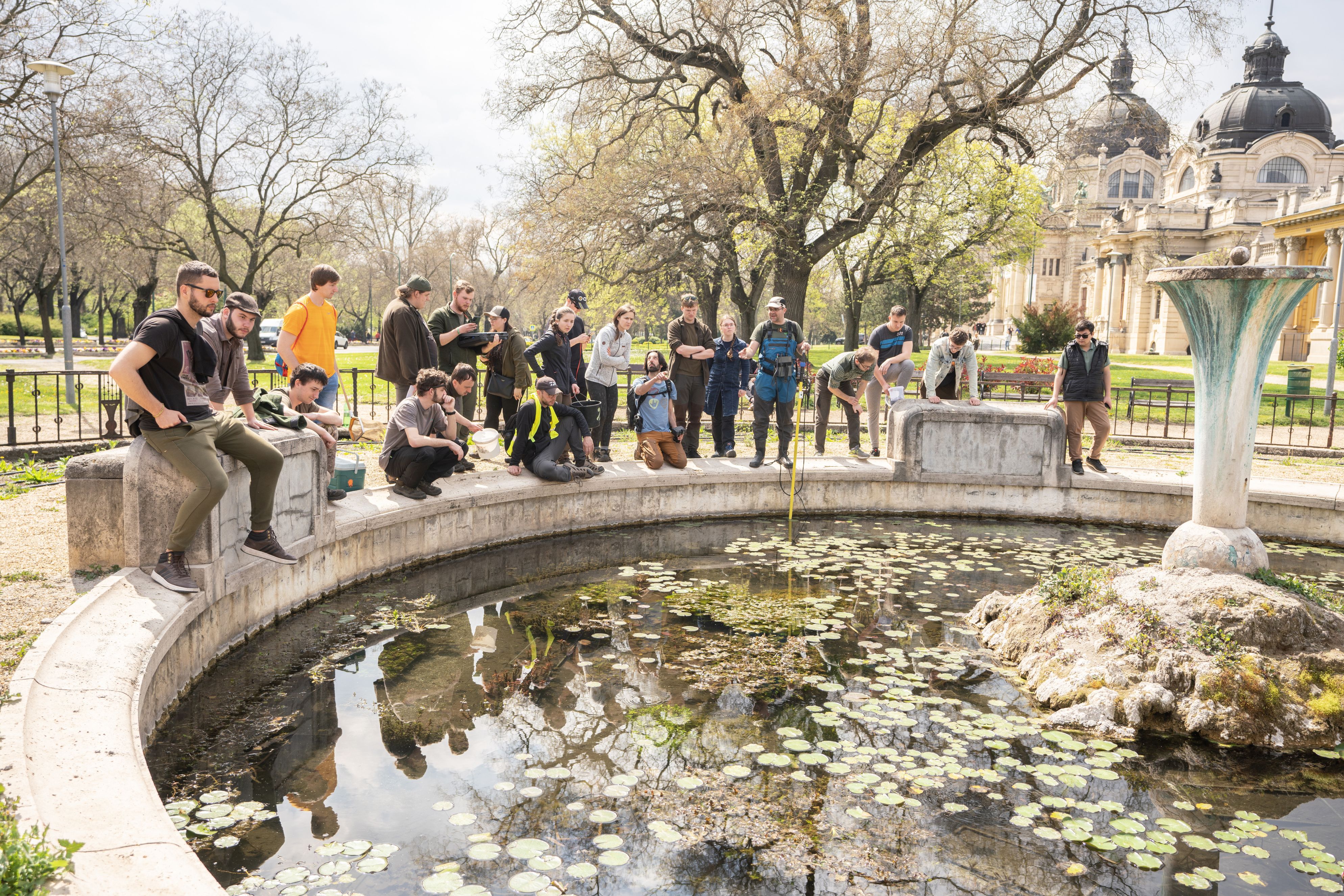 , Text k fotce:
A fountain fed by a thermal spring in the middle of Budapest in Varosliget Park hosting marbled crayfish, red shrimp and other aquarium fish and plants
, Text k fotce:
A fountain fed by a thermal spring in the middle of Budapest in Varosliget Park hosting marbled crayfish, red shrimp and other aquarium fish and plants - Foto:
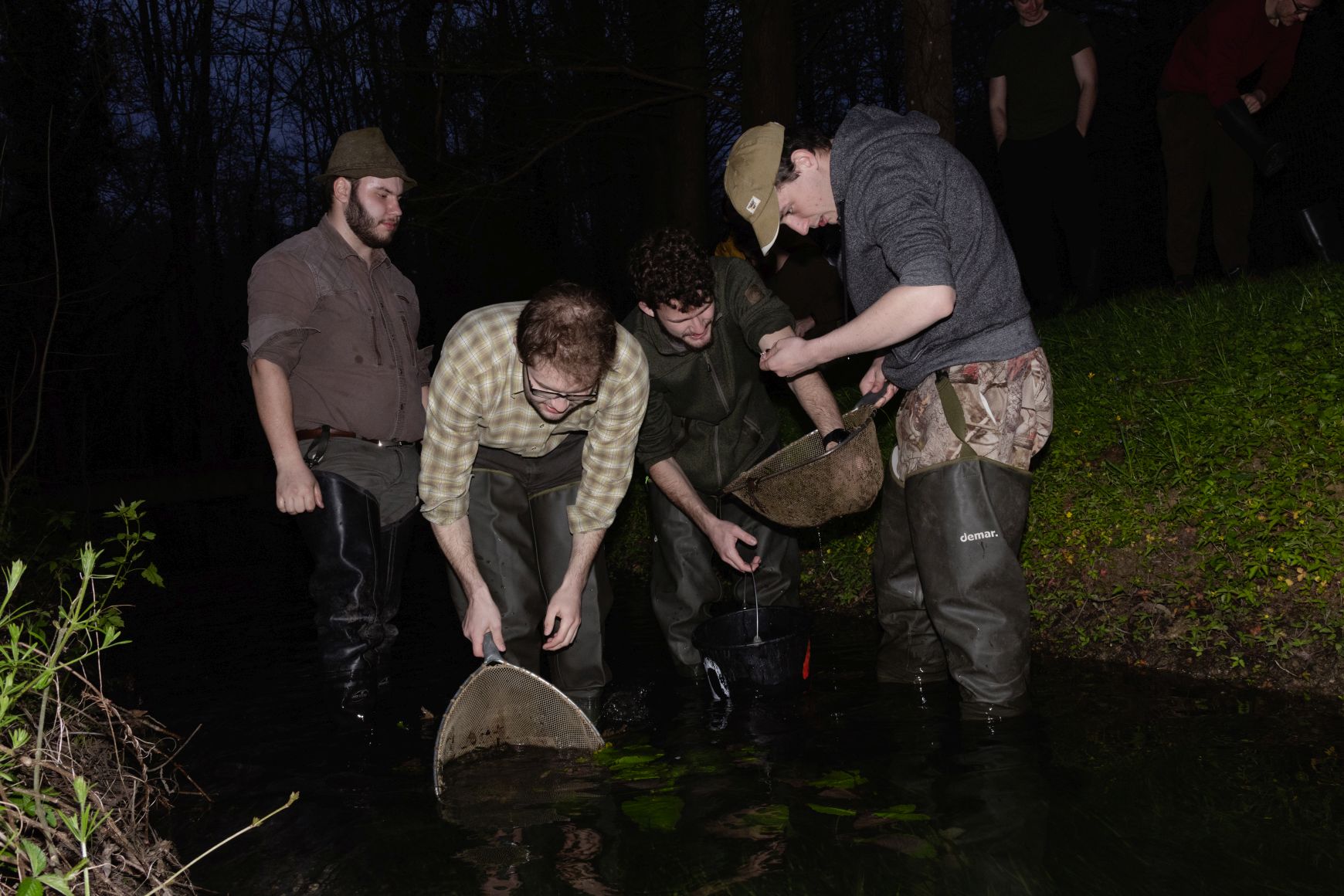 , Text k fotce:
Night fish and crayfish catching at northern outflow of the thermal lake Héviz
, Text k fotce:
Night fish and crayfish catching at northern outflow of the thermal lake Héviz - Foto:
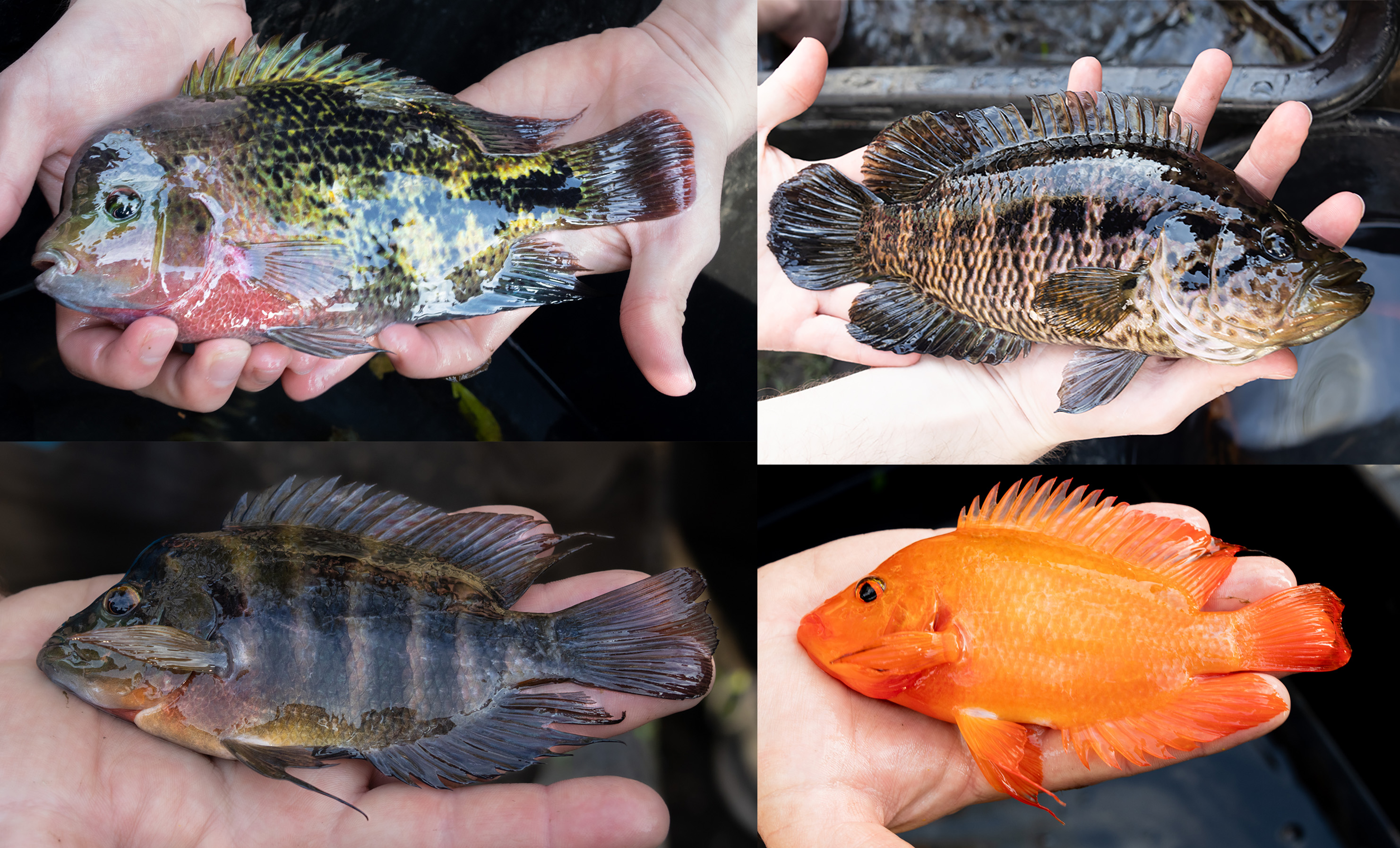 , Text k fotce:
Various species of cichlids caught in the main outlet of the thermal lake Héviz
, Text k fotce:
Various species of cichlids caught in the main outlet of the thermal lake Héviz - Foto:
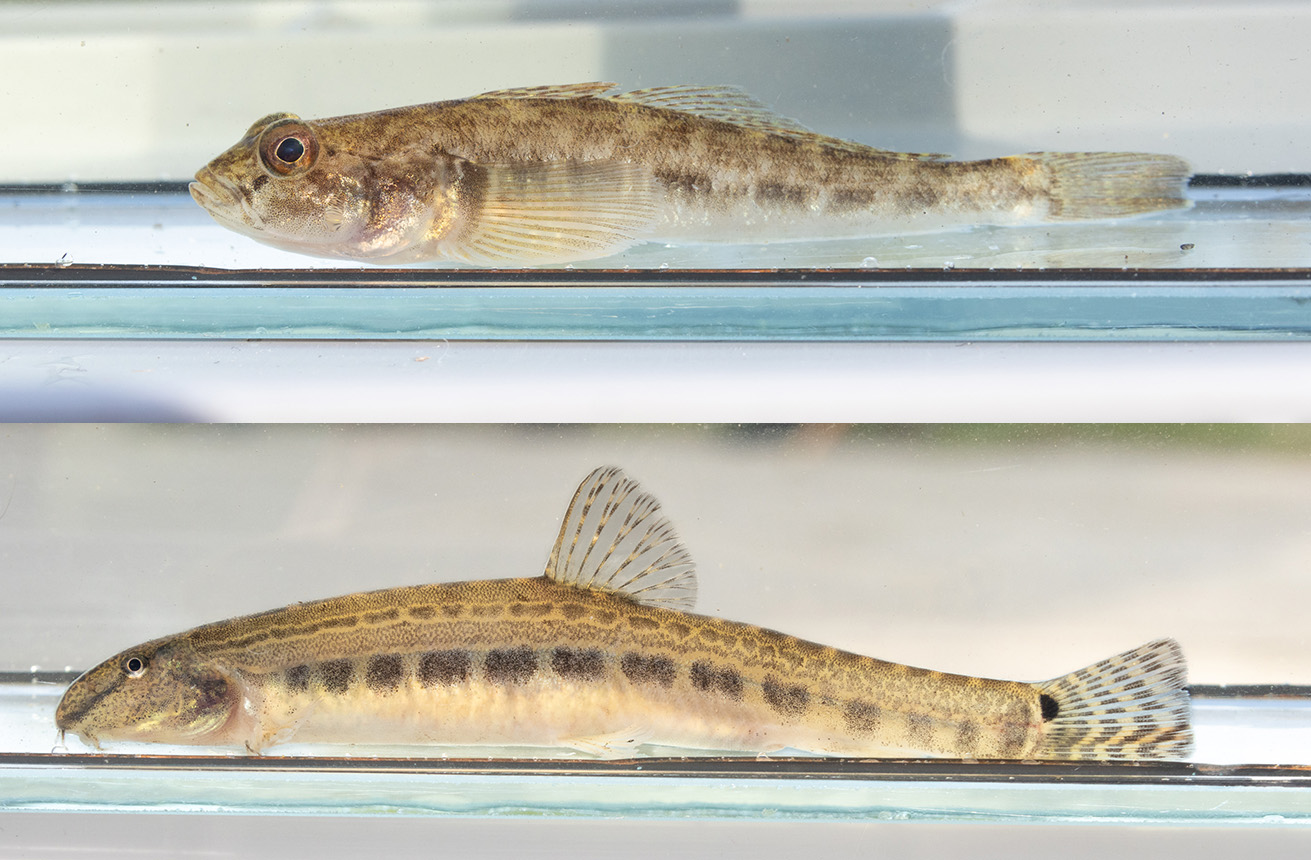 , Text k fotce:
Non-native monkey goby (top) and native Cobitis elongatoides (down)
, Text k fotce:
Non-native monkey goby (top) and native Cobitis elongatoides (down) - Foto:
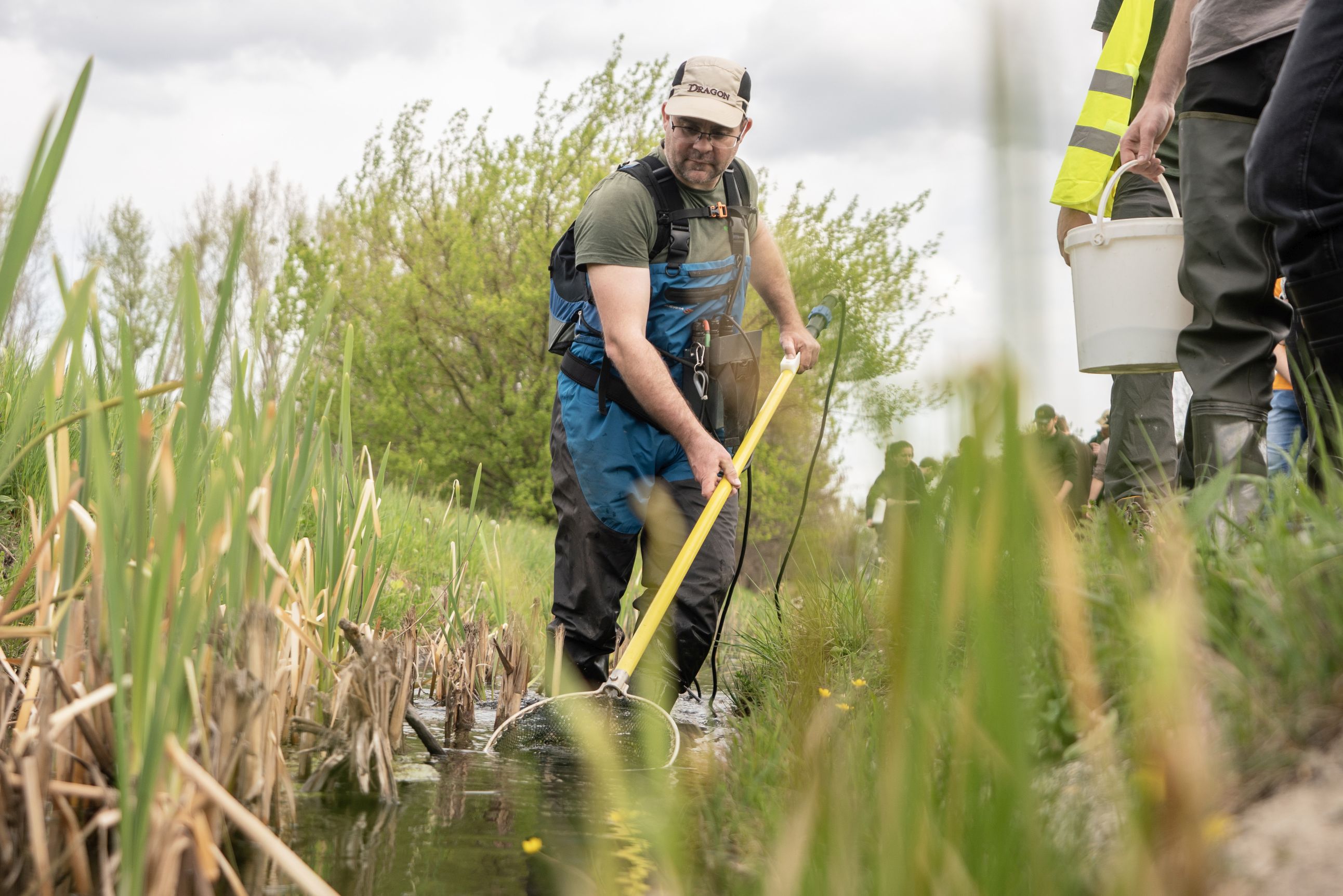 , Text k fotce:
Electro-fishing on the thermal tributary of the Barát stream
, Text k fotce:
Electro-fishing on the thermal tributary of the Barát stream - Foto:
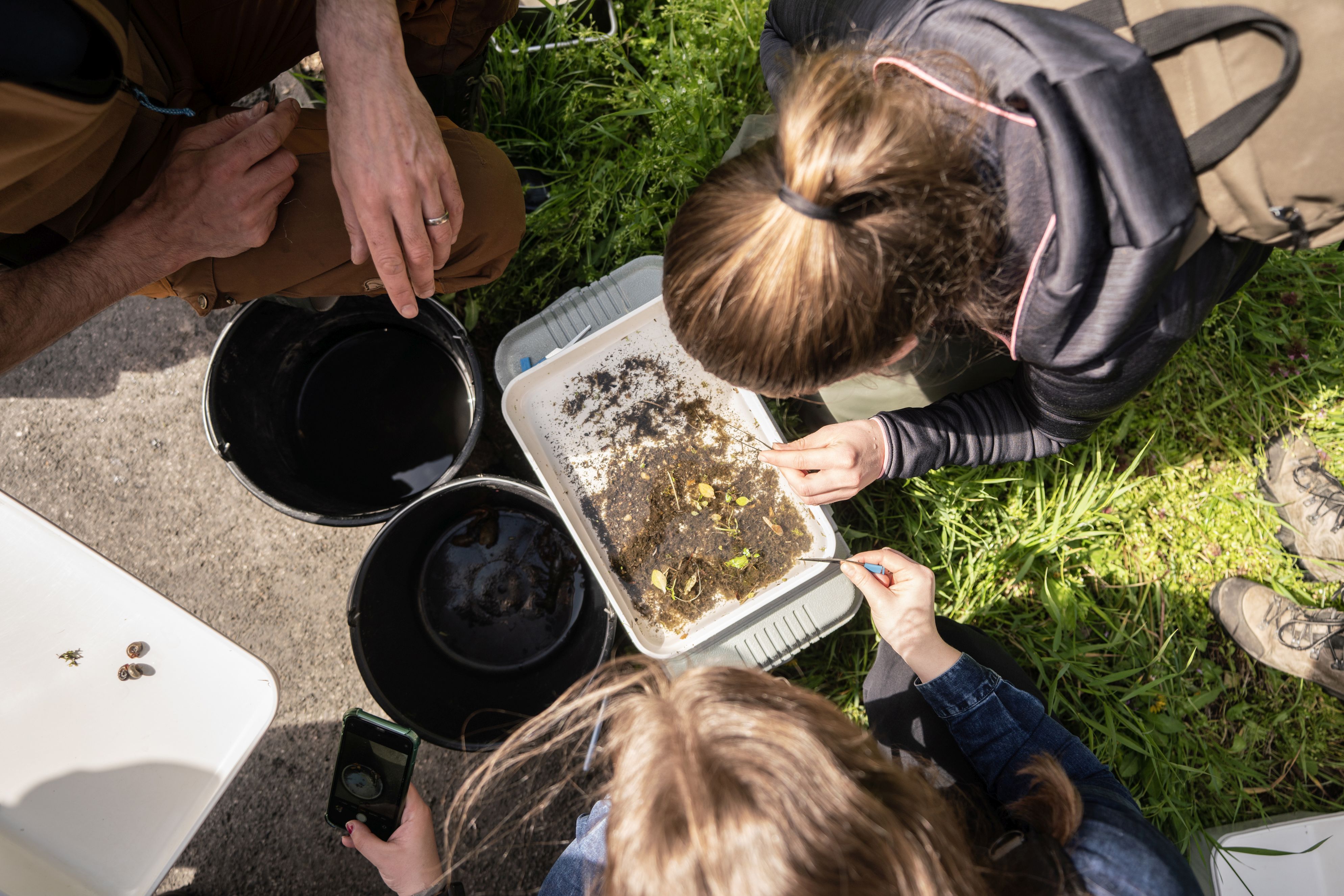 , Text k fotce:
Sorting the sample of macrozoobenthos from the thermal tributary of the Barát stream
, Text k fotce:
Sorting the sample of macrozoobenthos from the thermal tributary of the Barát stream - Foto:
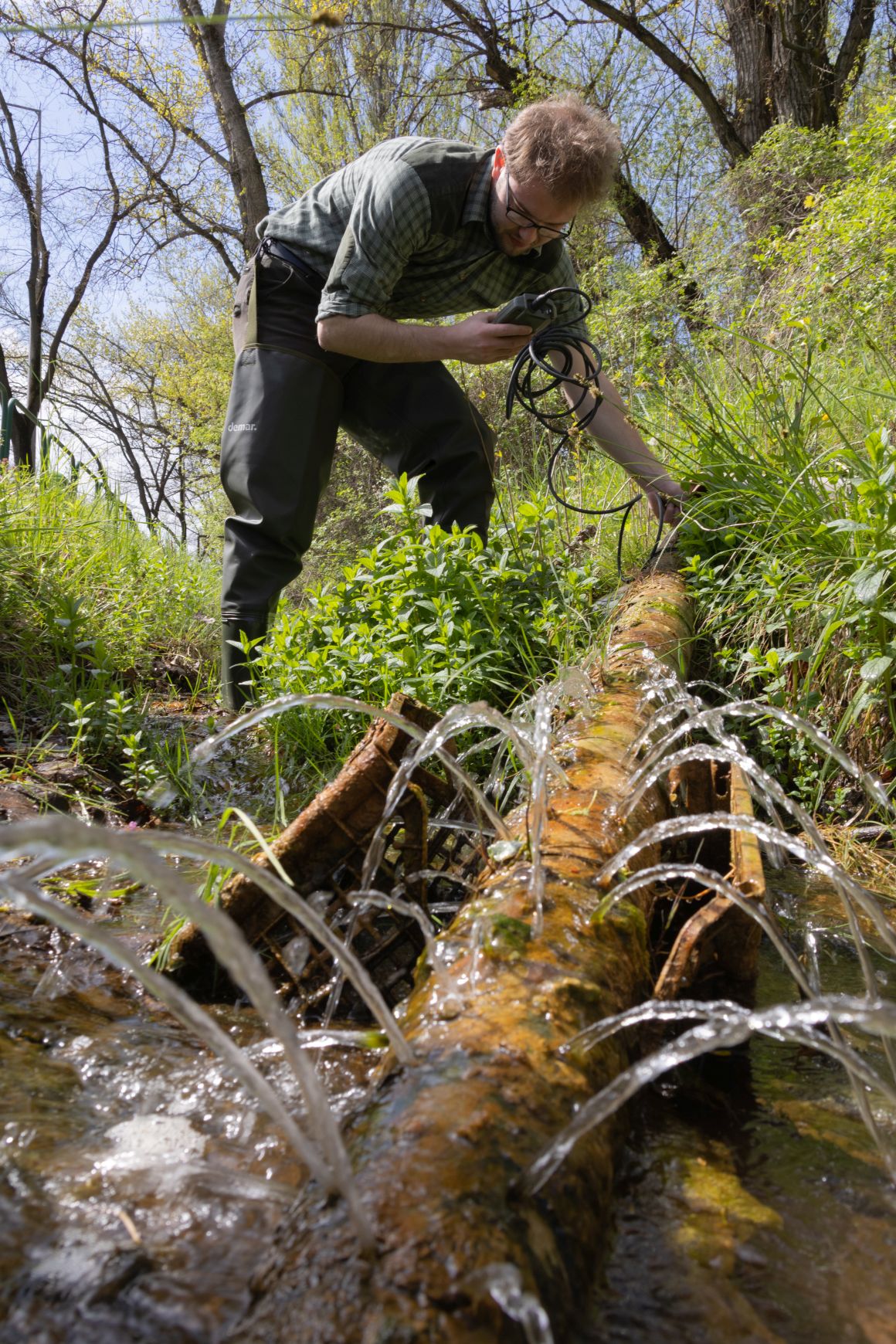 , Text k fotce:
Measurement of physical and chemical parameters of the source of the tributary of the Barát stream
, Text k fotce:
Measurement of physical and chemical parameters of the source of the tributary of the Barát stream - Foto:
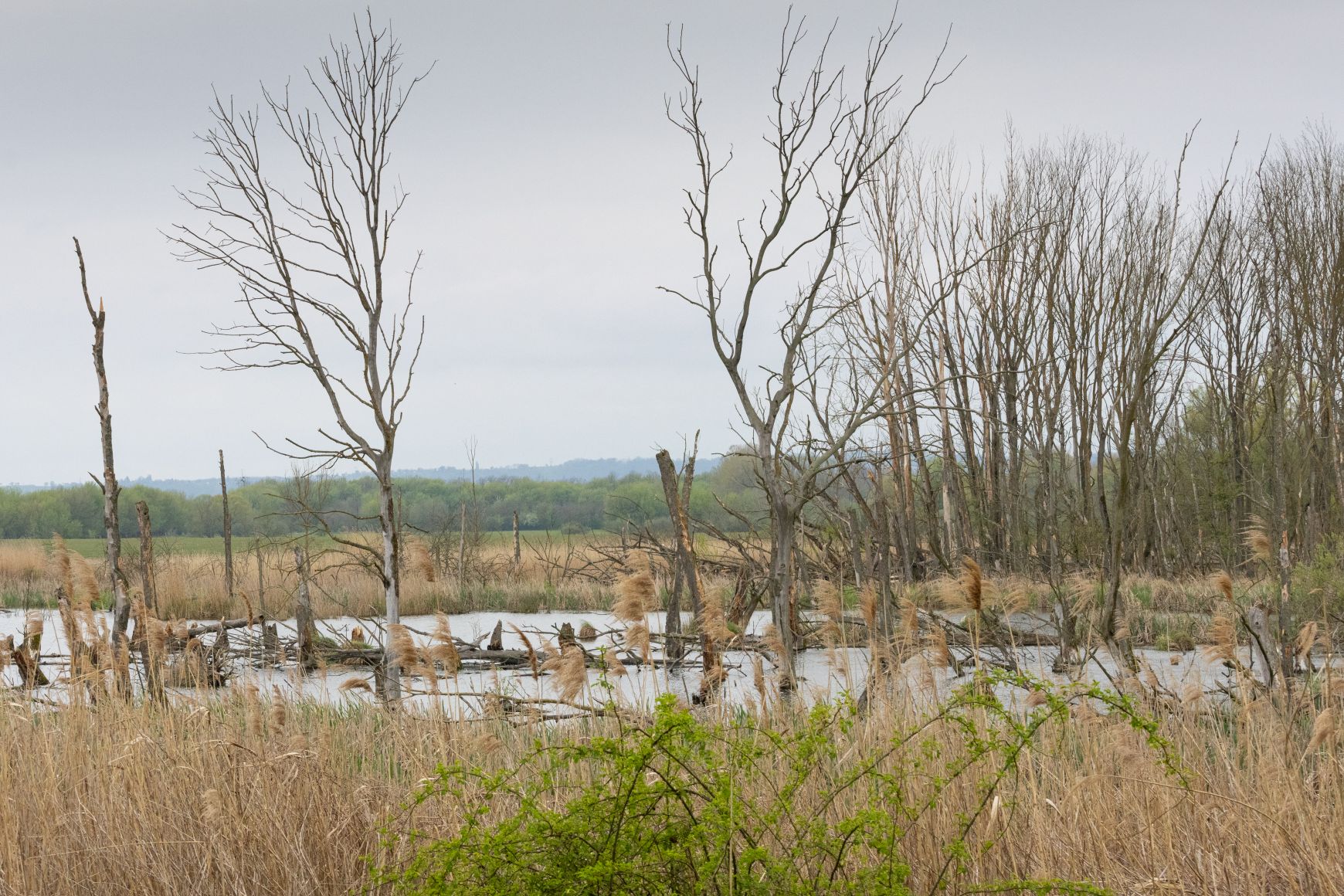 , Text k fotce:
Kis-Balaton water protection area – an artificial wetland built to capture nutrients from the Zala River, the main tributary of Lake Balaton
, Text k fotce:
Kis-Balaton water protection area – an artificial wetland built to capture nutrients from the Zala River, the main tributary of Lake Balaton - Foto:
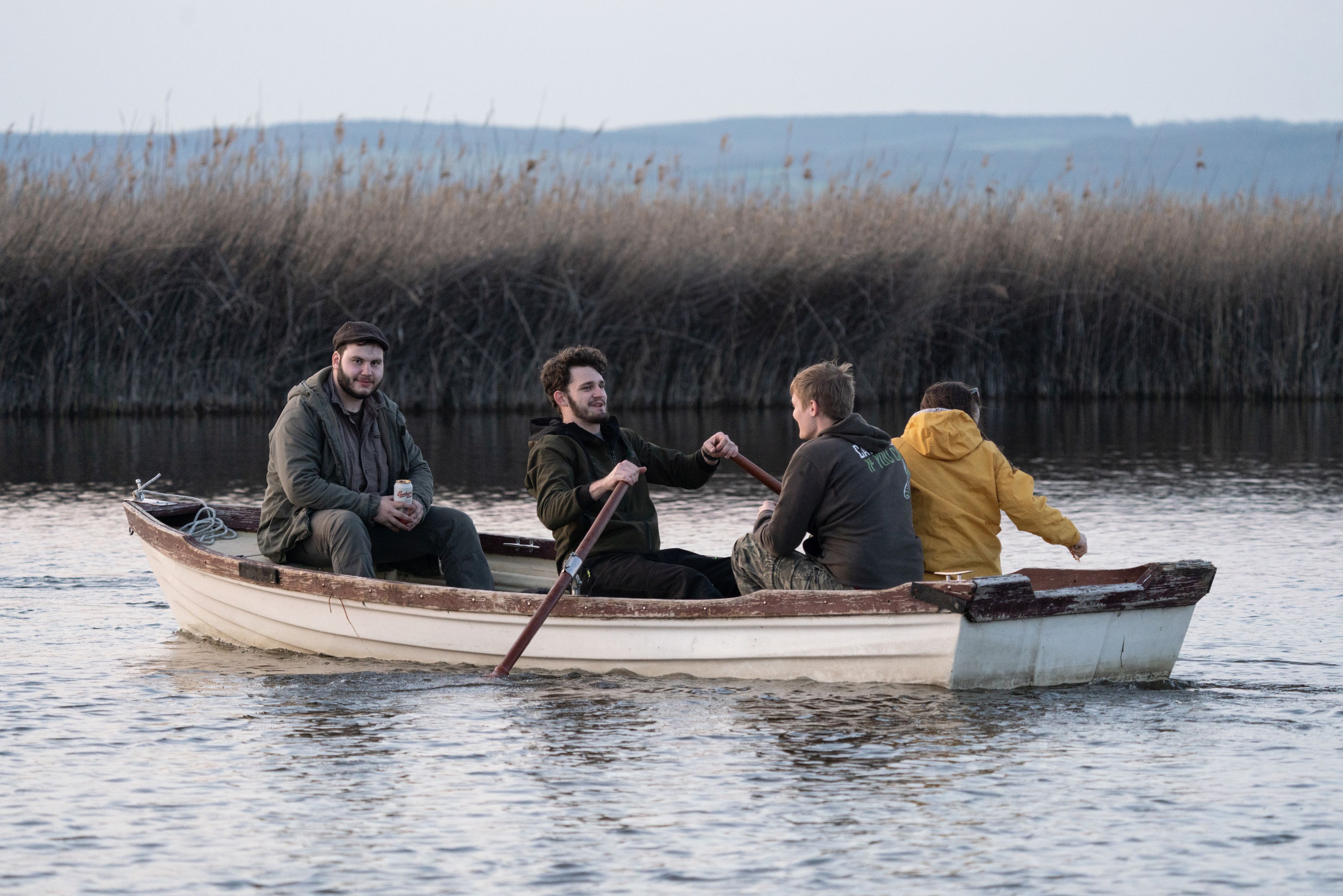 , Text k fotce:
Paddling to the zooplankton and macrozoobenthos sampling site on Lake Velence
, Text k fotce:
Paddling to the zooplankton and macrozoobenthos sampling site on Lake Velence - Foto:
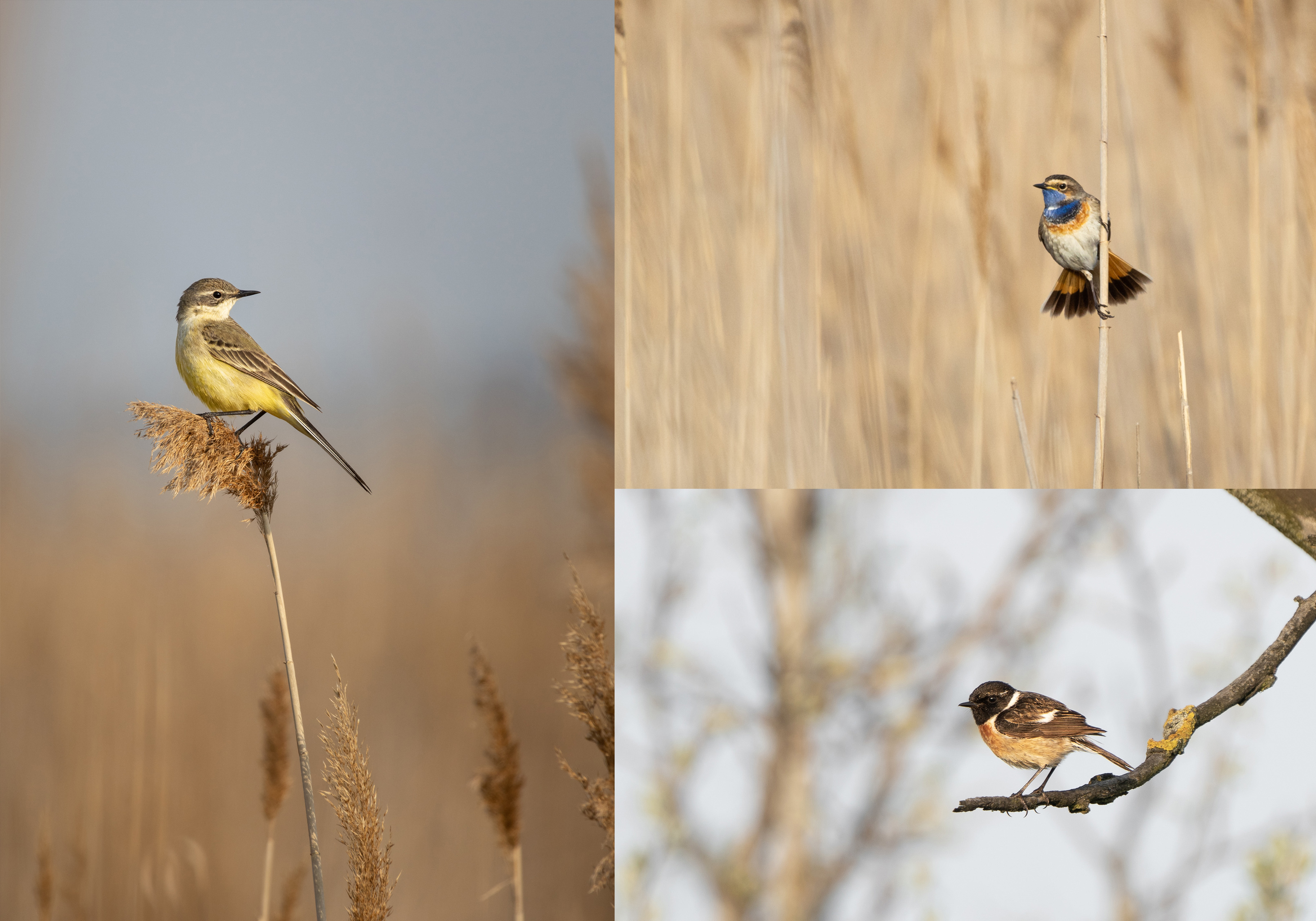 , Text k fotce:
Representatives of the bird fauna of the reeds of Lake Velence. Meadow warbler, blue-throated nightingale and black-headed potato warbler
, Text k fotce:
Representatives of the bird fauna of the reeds of Lake Velence. Meadow warbler, blue-throated nightingale and black-headed potato warbler
There are not many places with a strikingly high diversity of non-native species. Many of them can be seen in Hungary, especially in the thermal water localities.
We organized a field trip with the students to the localities that have become the object of our research in recent years, so they can get to know the exciting communities of these specific habitats. We had the opportunity to explore the outflows of Lake Hévíz, the largest thermal lake in Europe, the Városliget park in the Budapest centre, a thermal tributary of the Barát brook and Sulák brook. At these locations, students could practically try catching crayfish, fish and macrozoobenthos and thus practically see a very rich community of cichlids, a syntopic population of spiny cheek crayfish (Faxonius limosus) and red swamp crayfish (Procambarus clarkii), marbled crayfish (P. virginalis) and red cherry shrimp (Neocaridina davidi), very popular with aquarists, and many other non-native species. As a reward after a long day of (cray)fishing, the students enjoyed caught and cooked crayfish.
In contrast to these habitats saturated with non-native species, we visited the Kis-Balaton natural wetlands, built to improve the quality of the inflow water to Lake Balaton, and Lake Velence, which, in addition to its specific water characteristics and floating reed islands, stands out for its vast diversity of water and wetland birds. During the field trip, we were accompanied by our Hungarian colleagues András Weiperth and Árpád Ferincz, thanks to whom we could spot most of the native and non-native fish species found here using electrofishing, e.g., Amur Bitterling (Rhodeus sericeus), loach (Cobitis elongatoides). We did not find European Mud-minnow (Umbra krameri), which becomes rarer nowadays due to non-native gobiid species (Neogobius melanostomus, N. fluviatilis) and Chinese sleeper (Percottus glenii). Despite the massive density of non-native species, it was possible to catch the native species of water turtle - the European pond turtle (Emys orbicularis).
We ended the excursion visiting the biological station on the shore of Lake Neusidler in the town of Illmitz (Austria), where Gilbert Hafner gave us an engaging presentation of the history of the Lake and, on a short walk around the biological station showed the local phenomenon of salt marshes, once again hosting a high diversity of wetland and water birds, as well as specific invertebrate fauna.
Do you want to have similar experiences? Sign up for studies at the FFPW USBtoday.
Photo: Jan Škrabánek and Martin Bláha
The faculty employees attended: Antonín Kouba, Martin Bláha, Lenka Kajgrová
Ministerstvem zemědělství byl publikován Atlas svaloviny ryb, z dílny pracovníků FROV JU.
Cílem díla je zlepšit sledovatelnost rybích produktů, především ve vztahu určení druhu ryby dle dostupné svaloviny, a to především pro potřeby dozorových orgánů, ale i přepravců, obchodníků a široké veřejnosti a snížit tak pravděpodobnost omylů a falšování.
V rámci práce byla vytvořena evidence 179 druhů ryb a paryb z 63 čeledí. Každý druh je zdokumentován a popsán ve formě celého jedince a čerstvé a hluboce zmrazené svaloviny. Ta je posuzována ve formě celého filetu, včetně popisných charakteristik a možností záměny. Publikace je dostupná zdarma v české a anglické verzi. Česká verze čítá celkem 583 stran formátu A4, z toho 309 stran textů a 548 fotografií. úrovni. Příprava probíhala déle než 4 roky a svým rozsahem je publikace zcela unikátní i na celosvětové úrovni.
Nová studie, na které se výrazně podíleli vědci z Fakulty rybářství a ochrany vod JU, odhaluje, že víc než třetina každoroční celosvětové produkce akvakultury pochází z druhů chovaných mimo jejich původní areály výskytu. Výzkum vedený Franciscem Oficialdeguim z Jihočeské univerzity v Českých Budějovicích byl proveden ve spolupráci s interdisciplinárním mezinárodním týmem kolegů a zaměřil se na globální důsledky využívání nepůvodních druhů v akvakultuře. Studie byla publikována v časopise Reviews in Aquaculture.
Znění v plném rozsahu, si můžete přečíst zde.
- Fotogalerie:
- Foto:
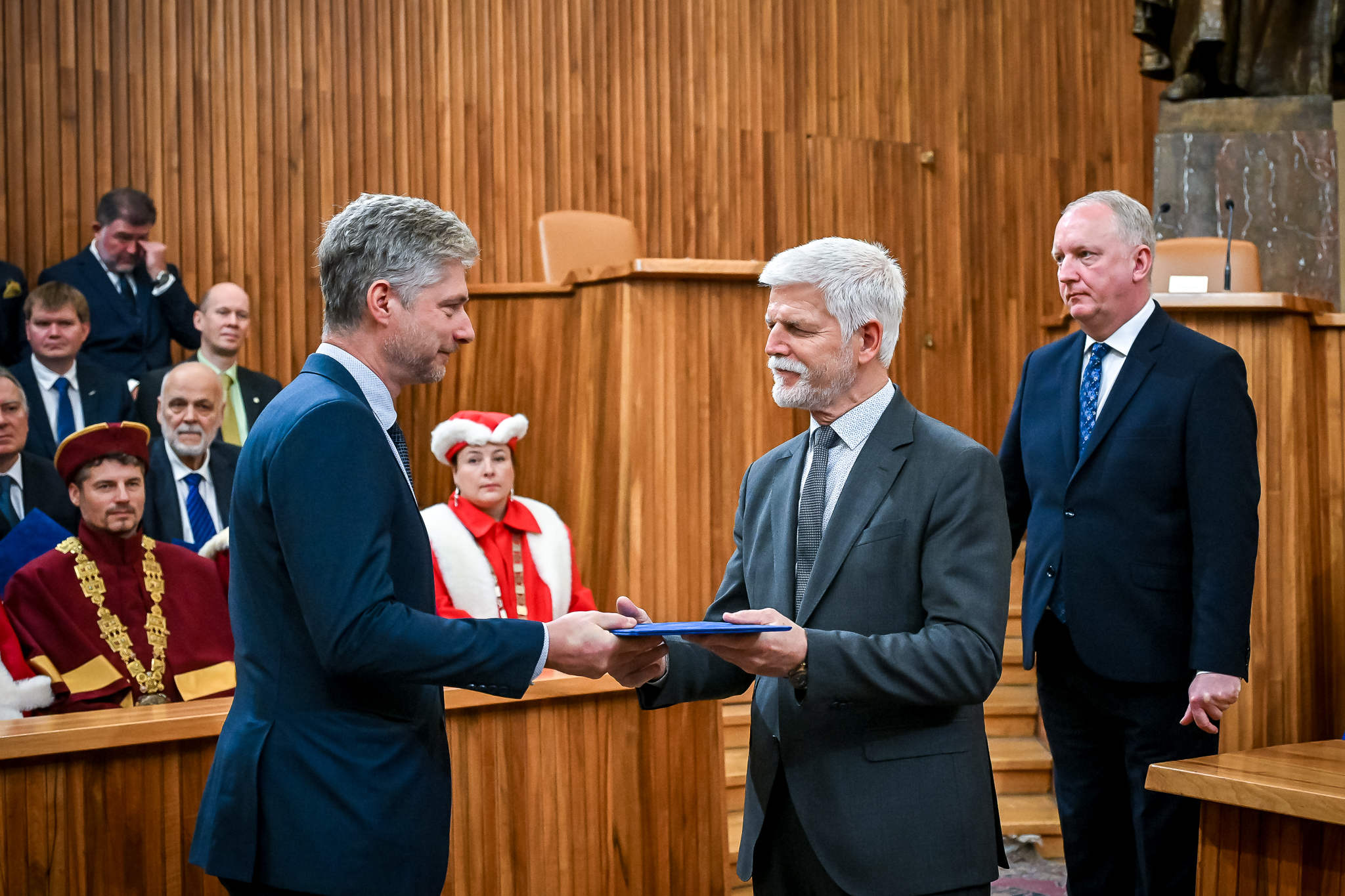
- Foto:
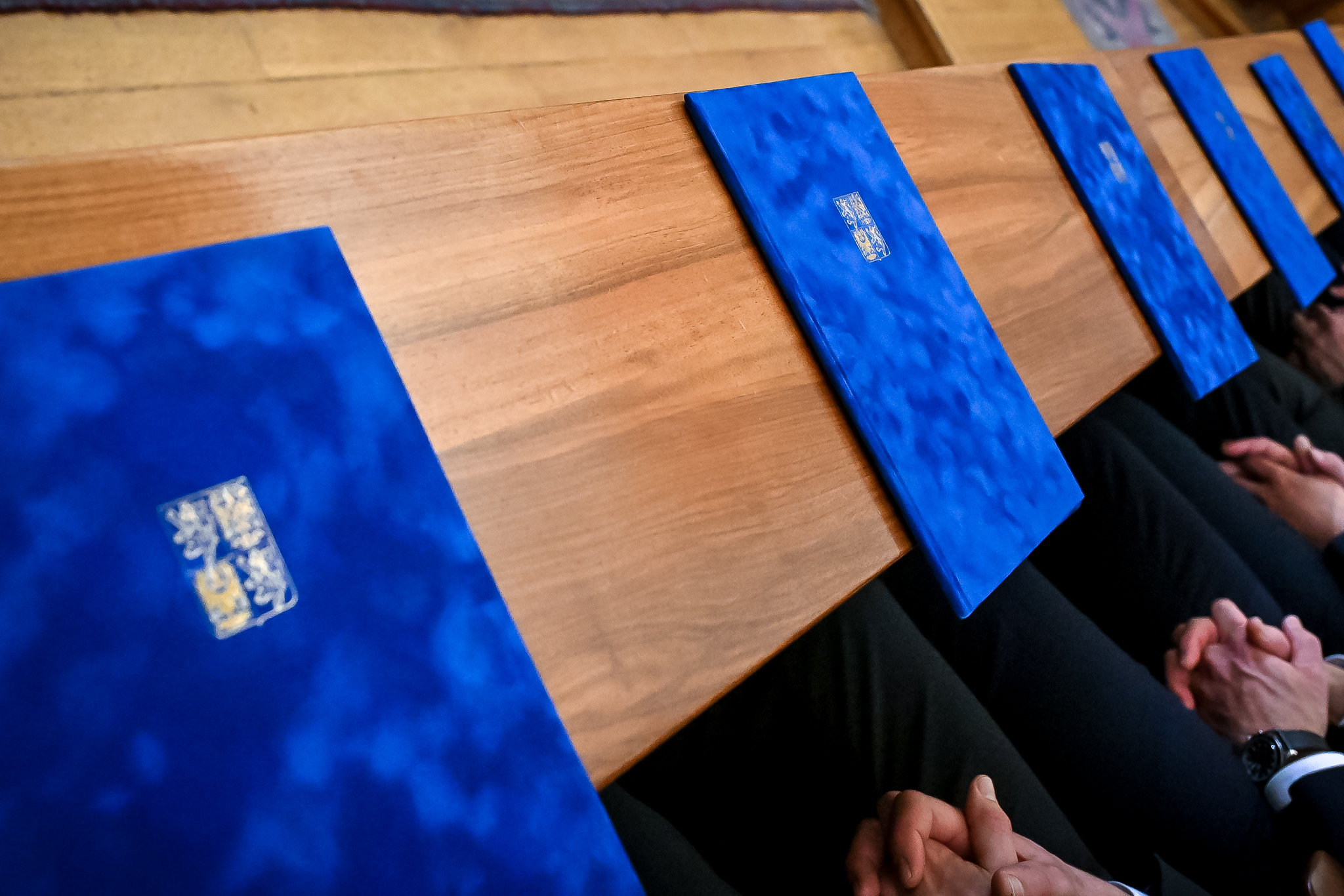
- Foto:
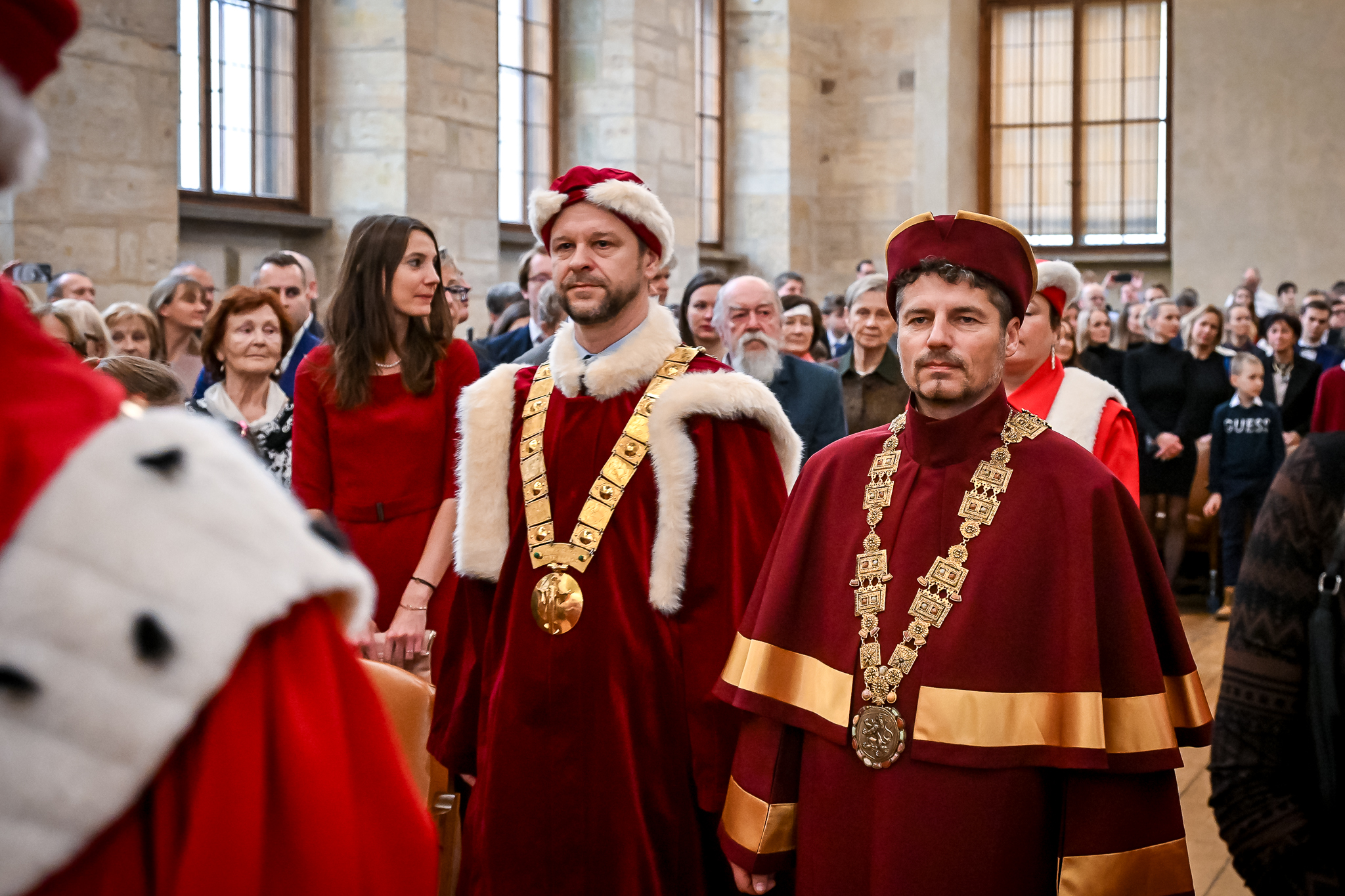
- Foto:
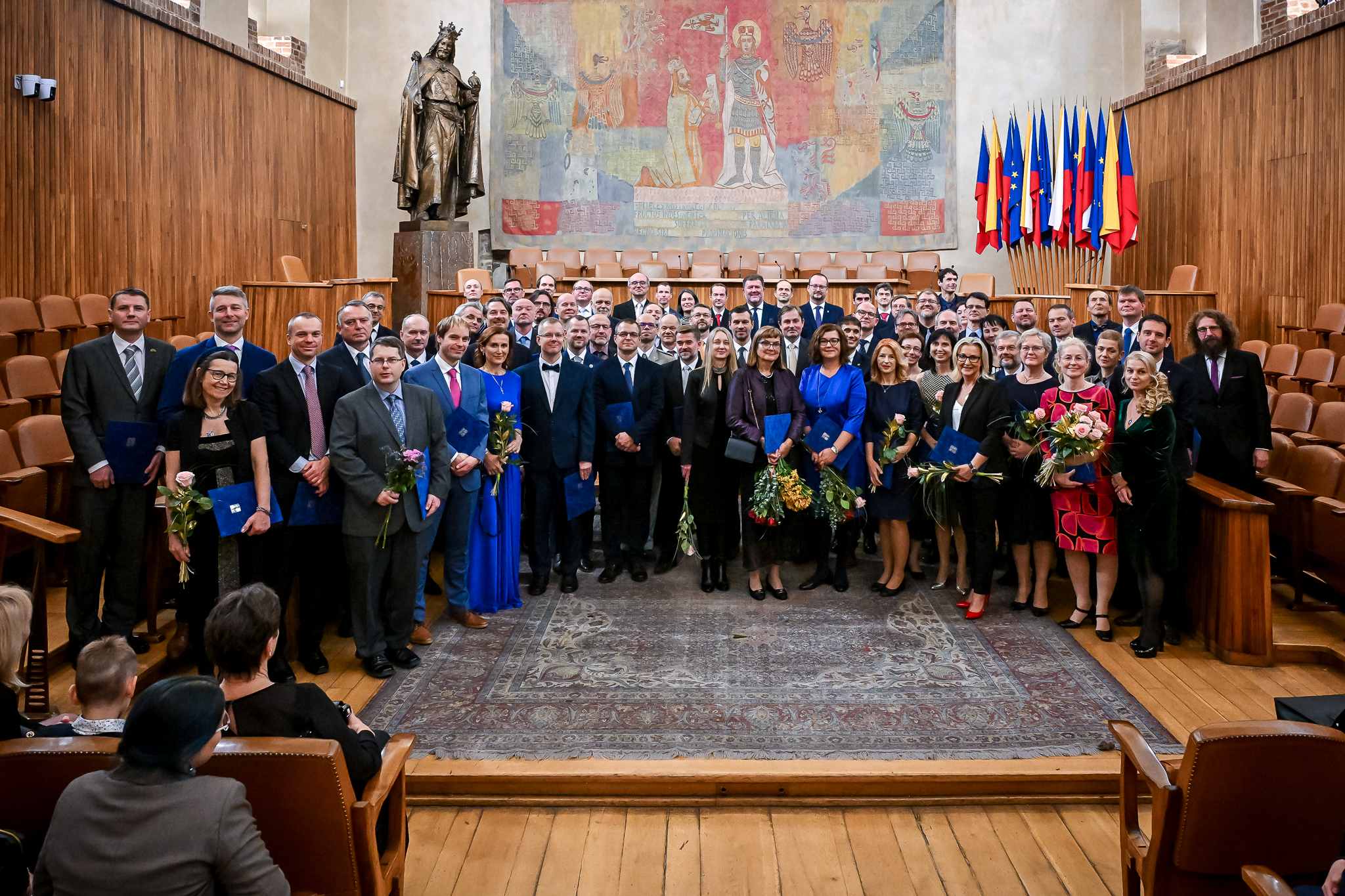
- Foto:
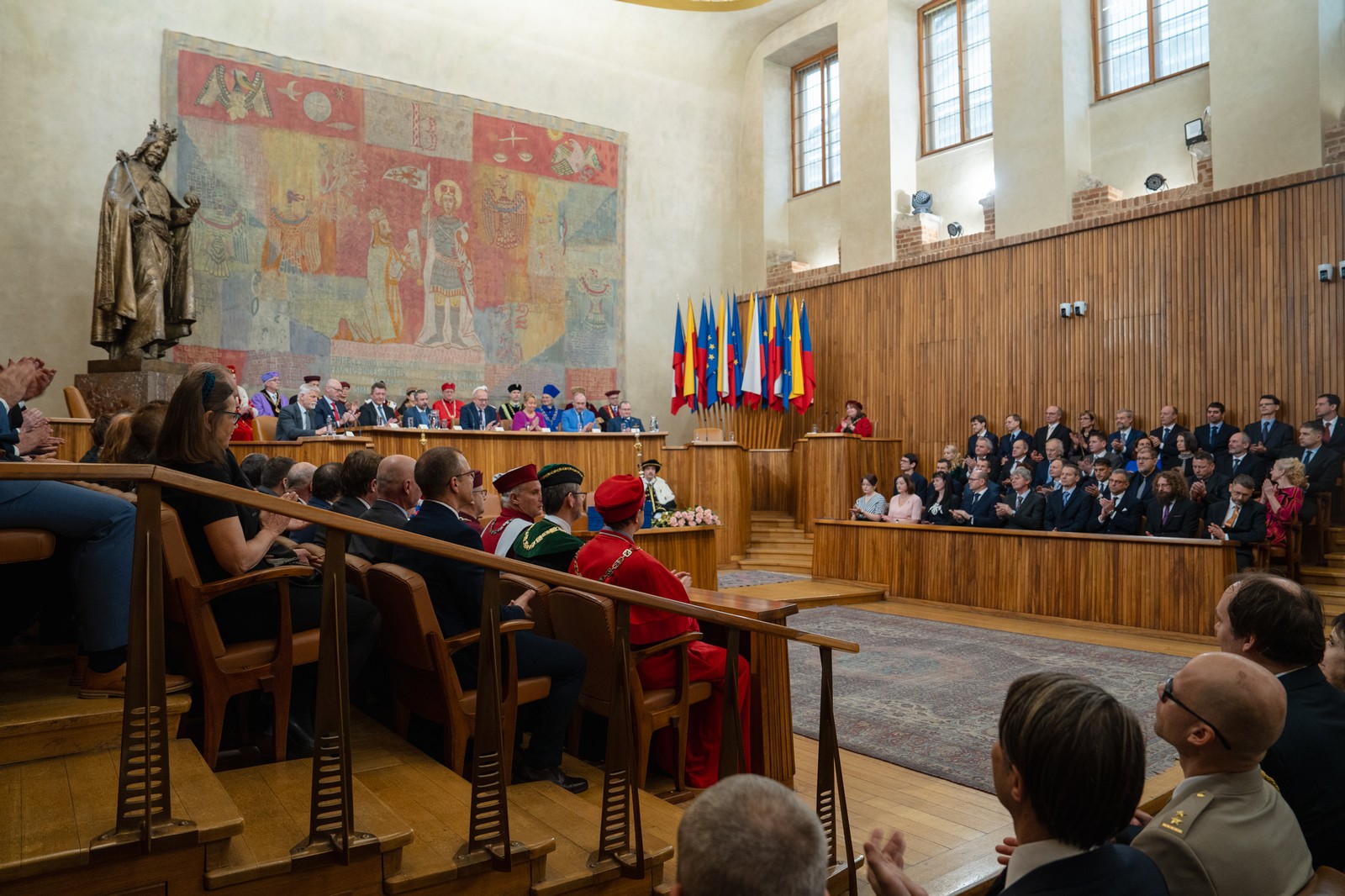
- Foto:
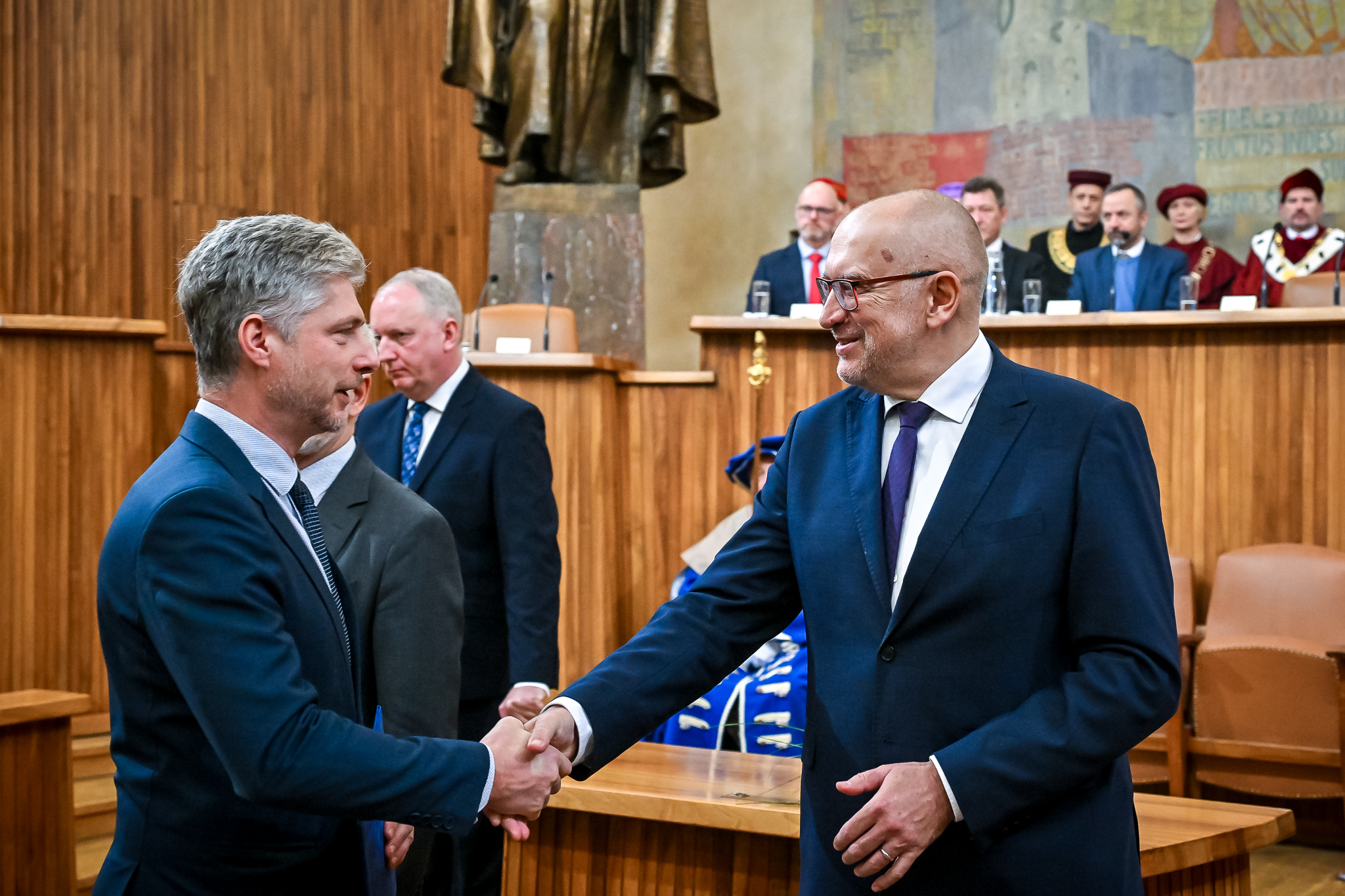
Dne 10. prosince 2024 v pražském Karolinu předal prezident republiky jmenovací dekrety profesorkám a profesorům vysokých škol mezi nimiž byl i náš kolega prof. Ing. Vladimír Žlábek, Ph.D. Srdečně gratulujeme.
Celé znění tiskové zprávy zde.
Foto: Karolinum, Tomáš Fongus
Fakulta rybářství a ochrany vod JU je partnerem nového evropského infrastrukturního projektu AQUASERV – Research Instrastructure Services for Sustainable Aquaculture Fisheries and the Blue Economy.
Projekt koordinuje portugalské vědecké centrum Univerzity Algarve (CCMAR) a účastní se ho 34 evropských partnerů.
Hlavní náplní projektu je umožnění přístupu na infrastruktury partnerů projektu vč. financování cestovních náhrad.
FROV JU je do projektu zapojena napříč fakultními pracovišti a očekává se od nás umožnění realizace 19 TNA projektů v celkové délce 98 týdnů strávených na 5 zapojených instalacích.
Zodpovědným řešitelem za fakultu je Ing. Petr Císař, Ph.D.
Implementace projektu AQUASERV potrvá po dobu 5 let, tedy až do března 2029.
Tento projekt byl financován z prostředků Evropské unie v rámci programu HORIZON Research and Innovation Actions na základě grantové dohody č. 101131121. Tento projekt byl financován s podporou Evropské komise.

Firma Kubíček VHS s.r.o. realizovala na Fakultě rybářství a ochrany vod JU, Genetickém rybářském centru ve Vodňanech nový systém provzdušňování 11 malých chovných rybníků.
Dvě soustrojí ROOTsových dmychadel KUBÍČEK typu 3D28C-080E a 3D19C-051E, jsou instalována na betonovou podestu na hrázi u rybníků. Rozvod vzduchu je proveden v nerezovém potrubí, které je opatřeno vývody s kohouty. Aeraci zajišťují jemnobublinné zátěžové elementy KUBÍČEK typu ATE65DG v provedení pro rybářské aplikace.
Výměnou způsobu provzdušňování, kdy nahrazujeme méně účinné plovoucí povrchové aerátory, za moderní systém kombinující ROOTsova dmychadla a jemnobublinnou aeraci, bylo dosaženo okamžité snížení energetické náročnosti provozu o více než 70%, při vyšším nasycení vody kyslíkem.
U příležitosti slavnostního zahájení akademického roku 2024/2025 předal 1. října 2024 rektor JU prof. Ing. Pavel Kozák, Ph.D. ocenění 21 významným osobnostem Jihočeské univerzity. Mezi oceněnými byli také odborníci působící na Fakultě rybářství a ochrany vod JU:
- Vědecké oceněnízískal Ing. Ondřej Nikl – cena Jakuba Krčína v oborové kategorii zemědělské a rybářské vědy za diplomovou práci na téma “Vliv alternativních zdrojů bílkovin v rybím krmivu na růst ryb a rostlin ve dvousmyčkovém akvaponickém systému.“
- Pedagogické ocenění obdržel Ing. Ján Regenda, Ph.D. – Jarlochova cena za vysokoškolskou učebnici „Praktika v rybníkářství“, která se soustředí na teorii i příklady spojené s péčí o rybníky určené k chovu a také na chov kapra jako hlavní ryby v českých zemích.
- Ing. Jitka Hamáčková obdržela ocenění za více než 59leté působení na Fakultě rybářství a ochrany vod JU, respektive ve Výzkumném ústavu rybářském a hydrobiologickém ve Vodňanech.
Všem oceněným gratulujeme a přejme mnoho dalších osobních či pracovních úspěchů.
Podrobnosti o dalších oceněných osobnostech najdete zde.
- Fotogalerie:
- Foto:
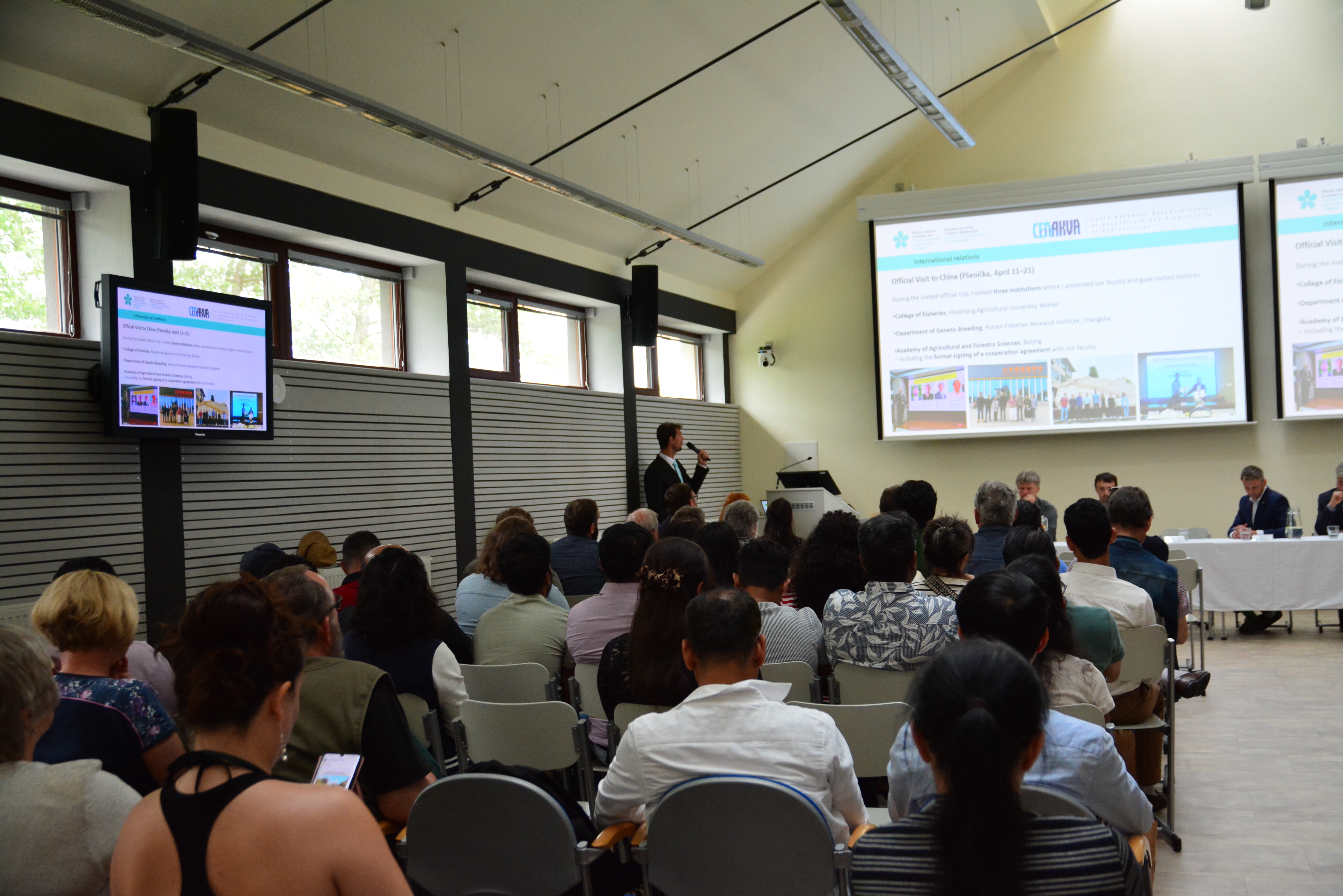
- Foto:
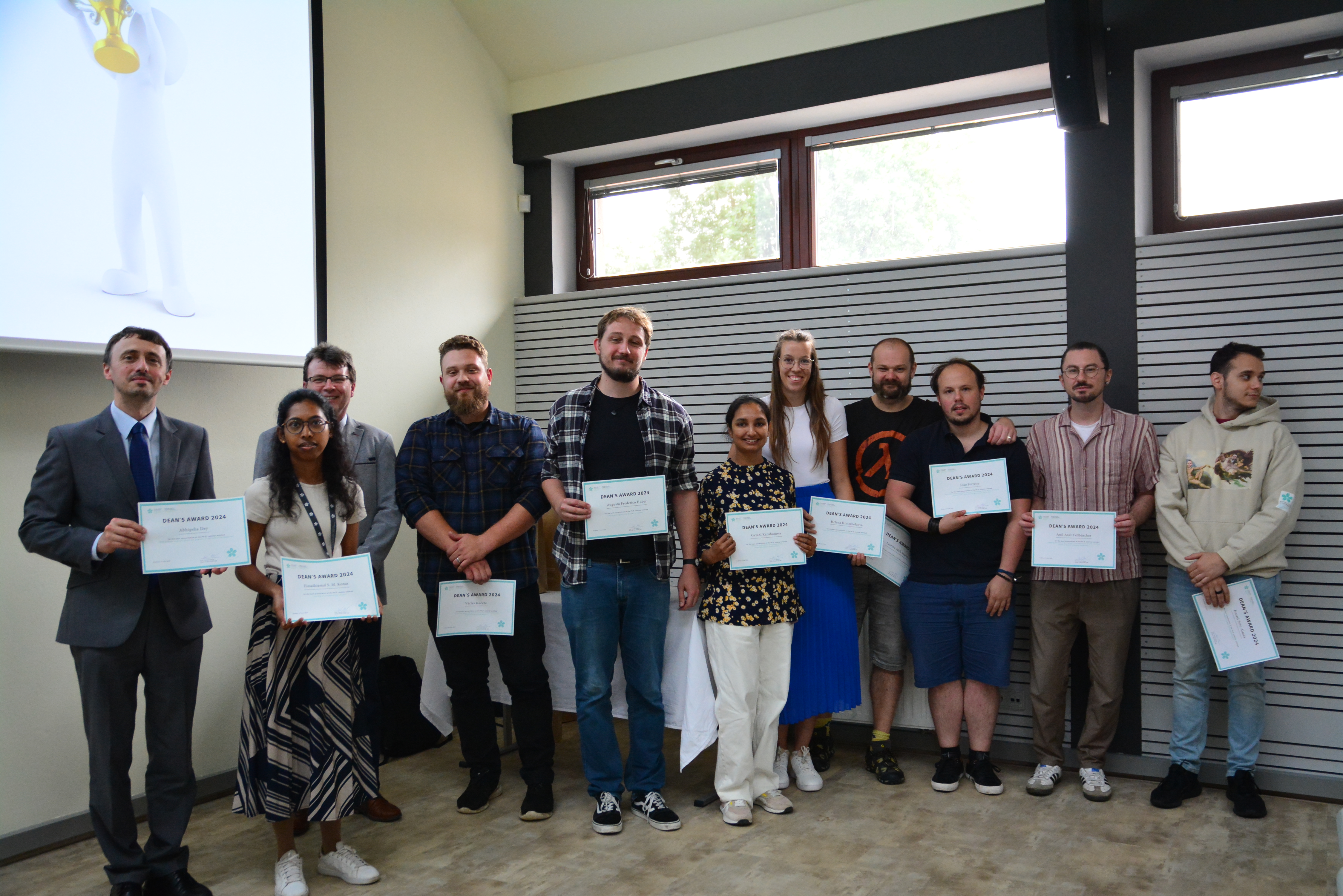
- Foto:

- Foto:
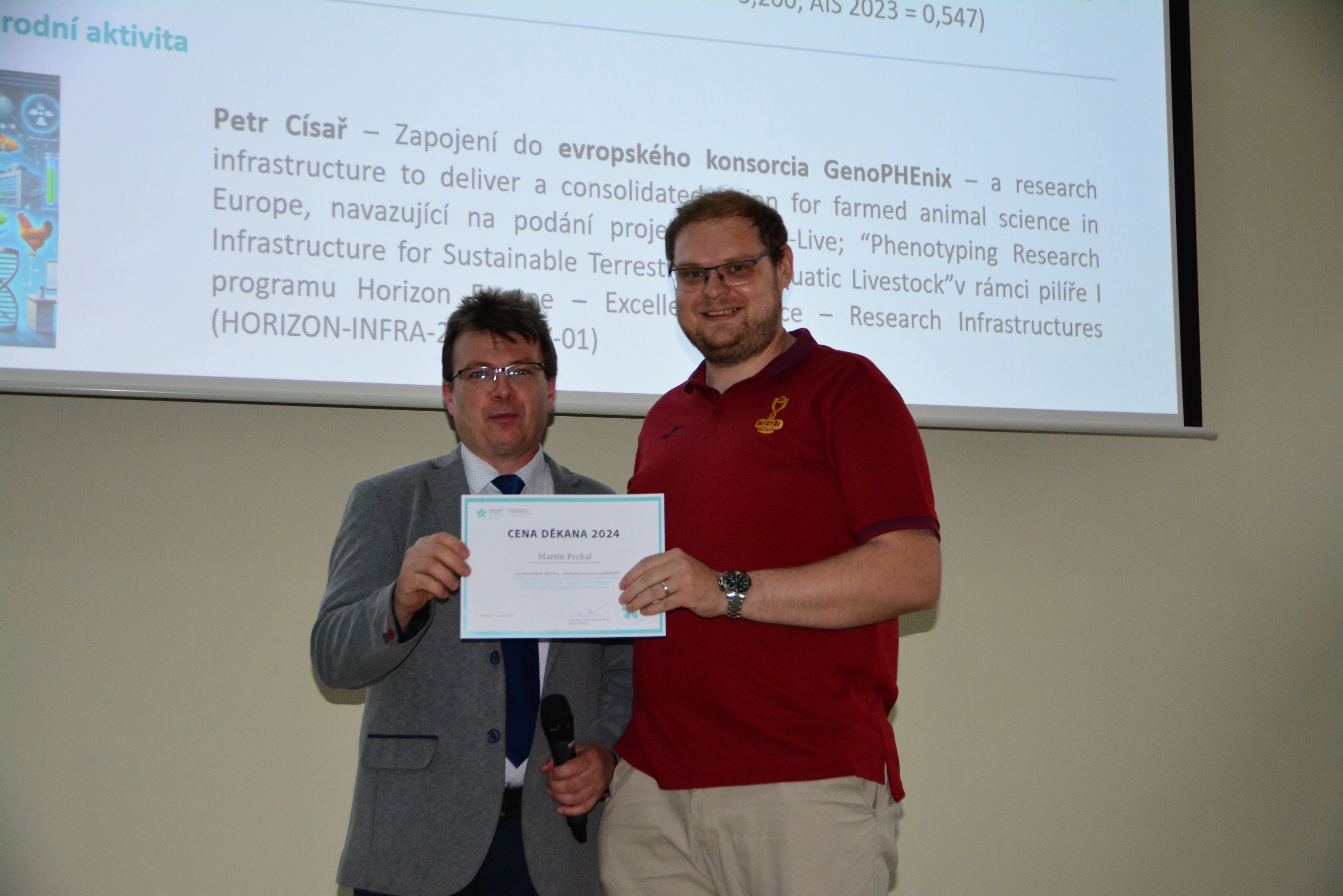
- Foto:
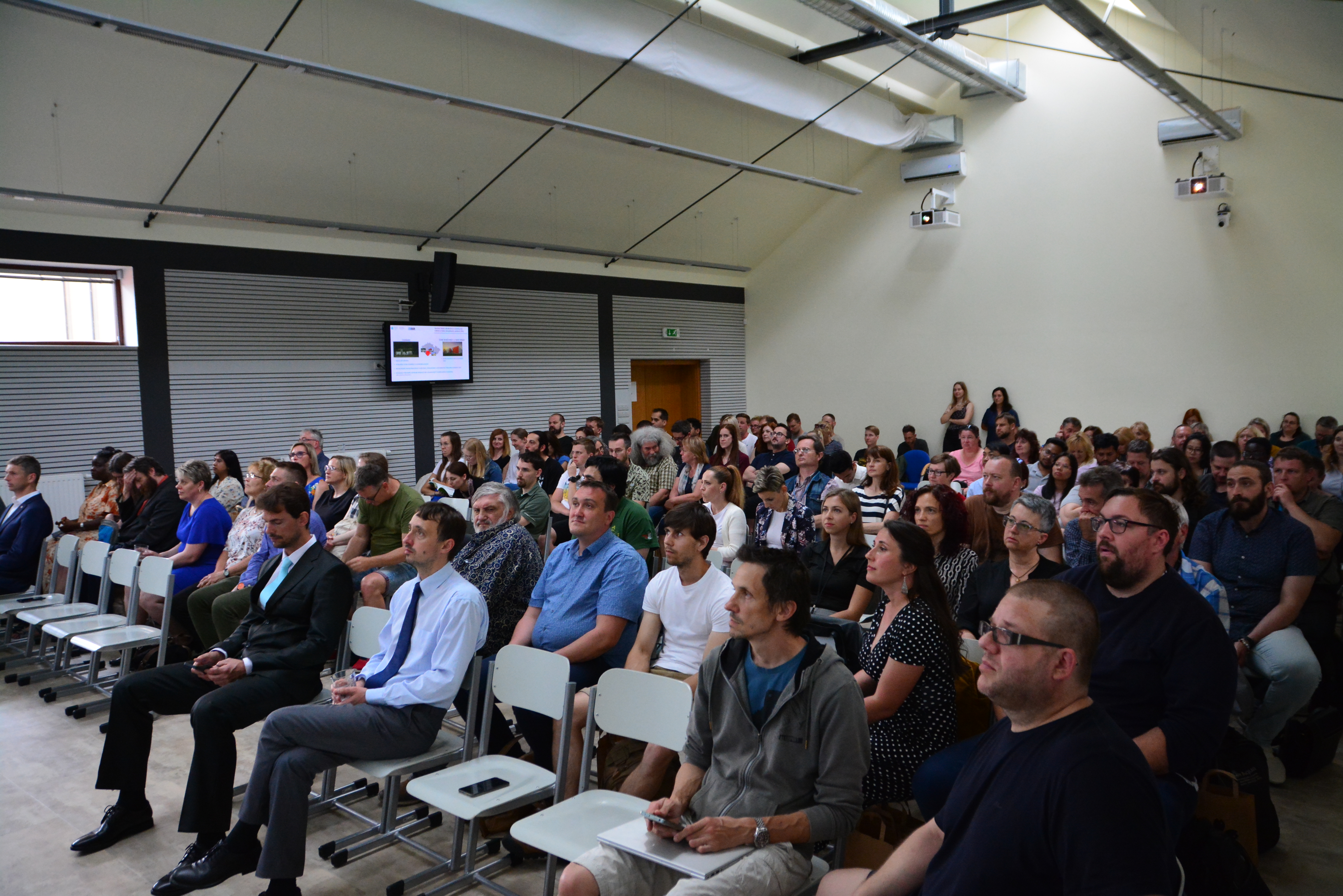
- Foto:
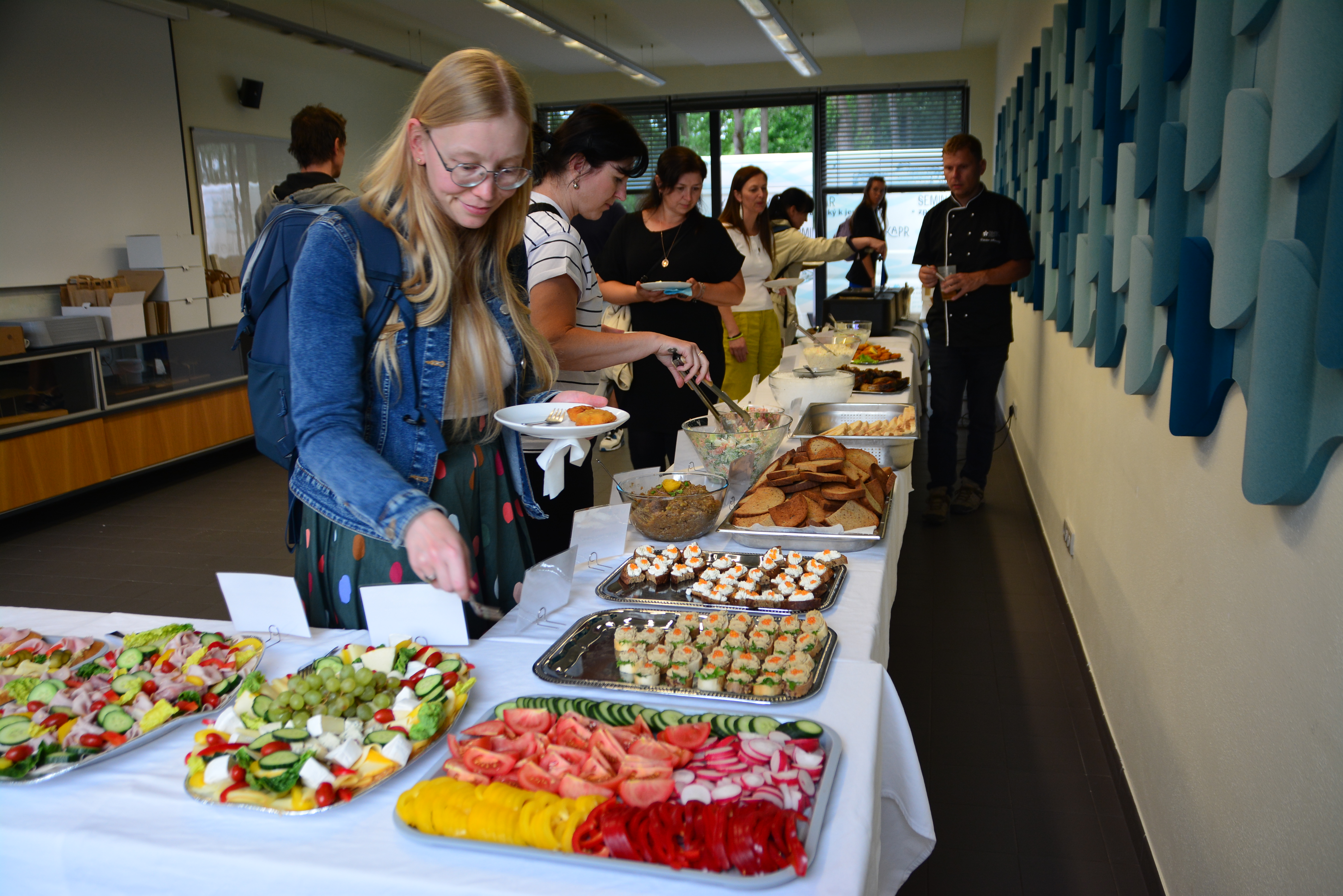
Ve čtvrtek 5. 6. 2025 byly v rámci Setkání akademických a vědeckých pracovníků a Ph.D. studentů FROV JU předány ceny za nejlepší prezentaci na Ph.D. seminářích těmto studentům:
- Joao Ferreiras názvem příspěvku“Heritable and nonheritable changes in offspring produced via surrogate parents from cryopreserved germ stem cells in fish”
- Laurine Mule Muenis názvem příspěvku“Sperm motility of freshwater species - sterlet, common carp and rainbow trout in viscous environments”
- Abhipsha Dey s názvem příspěvku “DNA damage response genes and proteins in fish embryo development”
- Anil Axel Tellbüschers názvem příspěvku“Feeding the fish or the system? Considerations for fish nutrition within a circular economy framework”
- Eissaikiamal S. M. Konars názvem příspěvku“The fate of unfertilized fish oocytes
- Helena Hinterholzovás názvem příspěvku “Fate and effects on polar micropollutants in aquatic environment”
- Gayani Kapukotuwas názvem příspěvku “Effect of psychoactive compounds on the neurotransmission system of fish”
- Václav Kučera s názvem příspěvku “Enhancing pikeperch culture using new technological and biotechnological approaches”
- Augusto Frederico Huber s názvem příspěvku “Ecological significance of claws in crayfish”
- Ismael Soto Almea s názvem příspěvku “Long -term trends of biological invasion”
Po tomto setkání následovala Celofakultní schůze FROV JU, na které byla nejen oceněna pracovní jubilea, ale také byly uděleny ceny děkana za mimořádné aktivity, a to konkrétně těmto zaměstnancům:
- Nejvyšší publikační aktivita– Haubrock Phillip
- Nejlepší publikace roku - Edens, B.M., Štundl, J.,Urrutia, H.A., Bronner, M.E.,2024. Neural crest origin of sympathetic neurons at the dawn of vertebrates. Nature 629: 121-126.
- Nejlepší publikace autora do 35 let v roce 2024 - Roy, D.R.,Roy, K., Panserat, S., Stejskal, V., Mráz, J. and Turchini, G.M., 2024. Long chain polyunsaturated fatty acid (LC-PUFA) composition of fish sperm: nexus of dietary, evolutionary, and biomechanical drivers. Progress in Lipid Research, p.101305.
- Nejlepší publikace autora do 35 let v roce 2024 - Janko, K., Eisner, J., Cigler, P., Tichopád, T.,2024. Unifying framework explaining how parental regulatory divergence can drive gene expression 1n hybrids and allopolyploids. Nature Communications 15: 8714.
- Nejlepší studentská publikace v roce 2024 - Soto, I.,Balzani, P., Carneiro, L., Cuthbert, R.N., Macedo, R., Tarkan, A.S., Ahmed, D.A., Bang, A., Bacela-Spychalska, K., Bailey, S.A., Baudry, T., Ballesteros-Majia, L., Bortolus, A., Briski, E., Britton, J.R., Buřič, M., Comacho-Cervantes, M., Cano-Barbacil, C., Copilas-Ciocianu, D., Couhglan, N.E., Courtois, P., Csabai, Z., Dalu, T., De Santis, V., Dickey, J.W.E., Dimarco, R.D., Falk-Andersson, J., Fernandez, R.D., Florencio, M., Franco, A.C.S., García-Berthou, E., Giannetto, D., Glavendekic, M.M., Grabowski, M., Heringer, G., Herrera, I., Huang, W., Kamelamela, K.L., Kirichenko, N.I., Kouba, A., Kourantidou, M., Kurtul, I., Laufer, G., Lipták, B., Liu, C., López-López, E., Lozano, V., Mammola, S., Marchini, A., Meshkova, V., Milardi, M., Musolin, D.L., Nunez, M.A., Oficialdegui, F.J., Patoka, J., Pattison, Z., Pincheira-Donoso, D., Piria, M., Probert, A.F., Rasmussen, J.J., Renault, D., Ribeiro, F., Rilov, G., Robinson, T.B., Sanchez, A.E., Schwindt, E., South, J., Stoett, P., Verreycken, H., Vilizzi, L., Wang, Y.J., Watari, Y., Wehi, P.M., Weiperth, A., Wiberg-Larsen, P., Yapici, S., Yogurtcuoglu, B., Zenni, R.D., Galil, B.S., Dick, J.T.A., Russell, J.C., Ricciardi, A., Simberloff, D., Bradshaw, C.J.A., Haubrock, P.J., 2024. Taming the terminological tempest in invasion science. Biological Reviews 99: 1357–1390.
- Nejlepší aplikační výsledek - Turek J.,Avramović, M., Bořík, A., Lepič, P., Randák, T.,2024. Využití alizarinové červeně (ARS) při hromadném značení juvenilů lososovitých ryb
- Významná mezinárodní aktivita – Císař Petr, zapojeni do evropského konsorcia GenoPHEnix navazující na podání projektu Pheno-Live v rámci pilíře I programu Horizon Europe Excellent Science - Research Infrastructures (HORIZON-IN FRA-2024-DEV-01)
- Nejlepší pozitivní zviditelnění– Prchal Martin, 1. místo v soutěži ministra zemědělství pro mladé vědce a vědkyně za rok 2024 - ocenění mimořádných výsledků výzkumu
a experimentálního vývoje
Všem oceněným gratulujeme.
Dne 4.12.2024 proběhl na Fakultě rybářství a ochrany vod JU seminář k ukončení projektu NAZV QK22020144 s názvem „Druhová a technologická́ diverzifikace produkčního rybářství́ v ČR s cílem podpořit jeho efektivitu a konkurenceschopnost“ a projektu Interreg Rakousko – Česká spolupráce ATCZ00002_AquaCycle. Seminář se konal na středisku MEVPIS Vodňany a jeho součástí bylo kromě odborných přednášek také prezentace firmy Smotech s.r.o. Přednášky svým zaměřením pokrývaly bikulturní chov ryb v intenzivních podmínkách, chov ryb v pontonovém systému, reprodukční strategie candáta a jeho adaptace při vysazení, zpětně využití živin v rámci intenzivního chovu za pomoci hmyzu a rostlin, podporu perifytonu v produkčních rybnících, deponaci živin pod hrázemi rybníků při jejich výlovu a další.
Semináře se zúčastnili především rybáři, a to jak soukromí chovatelé, tak i členové ČRS, ale také vědečtí pracovníci z Přírodovědecké fakulty JU, Hydrobiologického ústavu Akademie věd a zástupci z Ministerstva zemědělství. Věřím, že tento seminář napomohl předat zkušenosti nashromážděné v průběhu řešení projektu rybářské i vědecké sféře a napomůže k dalšímu rozvoji české akvakultury.

- Fotogalerie:
- Foto:
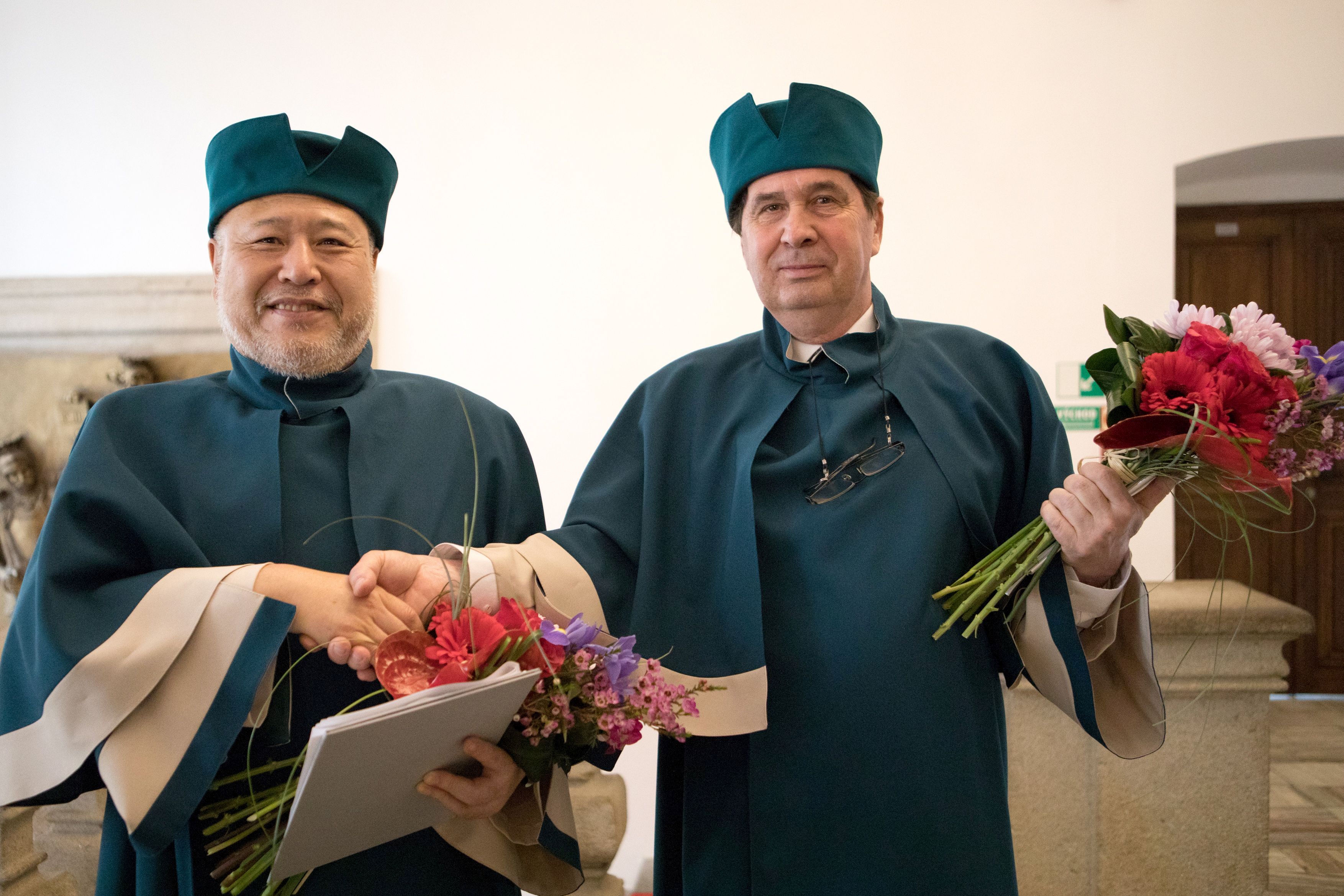
- Foto:
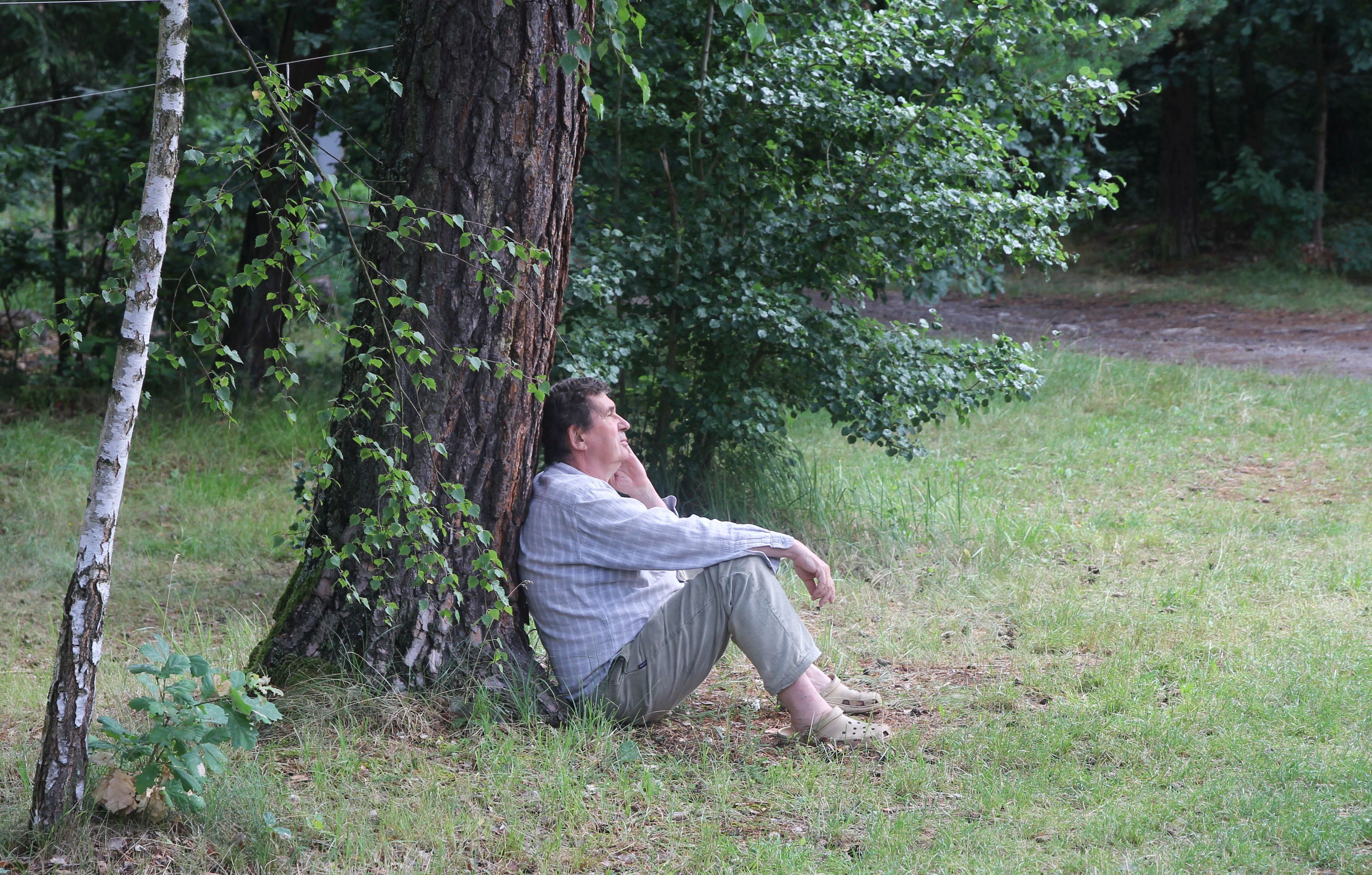
S hlubokou lítostí oznamujeme, že 16. 11. 2024 ve věku 73 let zemřel po vážné nemoci náš dlouholetý kolega a přítel prof. Ing. Petr Ráb, DrSc., dr.h.c. Ve své laboratoři genetiky ryb v Ústavu živočišné fyziologie a genetiky AV ČR, v.v.i. vychoval celou generaci velmi výrazných vědeckých osobností a za více než 40 let spolupráce s námi ve Výzkumném ústavu rybářském a hydrobiologickém a později na fakultě se významně podílel na formování vědecké úrovně mnoha z nás, studentů, doktorandů a pracovníků ústavu. V nespočetné řadě spontánních diskuzí se často projevil jako účinný katalyzátor, ne-li přímo jako iniciátor dalšího směřování rybářského výzkumu, společných projektů a grantů. Petr byl prvním profesorem, který byl ve VÚRH po získání habilitačních a profesorských práv jmenován, a od té doby byl účasten ve všech hodnotících komisích pro habilitační a profesorská řízení na fakultě, ve většině případů těmto komisím předsedal. Na Jihočeské univerzitě působil také jako člen vědecké rady univerzity, vědecké rady naší fakulty a člen několika oborových rad doktorského studia. Za své dlouholeté zásluhy o rozvoj rybářských věd při spolupráci s naším ústavem a fakultou obdržel v roce 2017 z rukou rektora Jihočeské univerzity v Českých Budějovicích čestný doktorát.
V Petrovi ztrácíme eminentního mentora, chápajícího kolegu, kritického čtenáře mnoha našich rukopisů a především dobrého člověka a kamaráda. Věnujte prosím jeho památce tichou vzpomínku.
The Faculty of Fisheries and Water Protection USB offers lifelong learning courses for the general public.
The current offer can be found here.
- Fotogalerie:
- Foto:
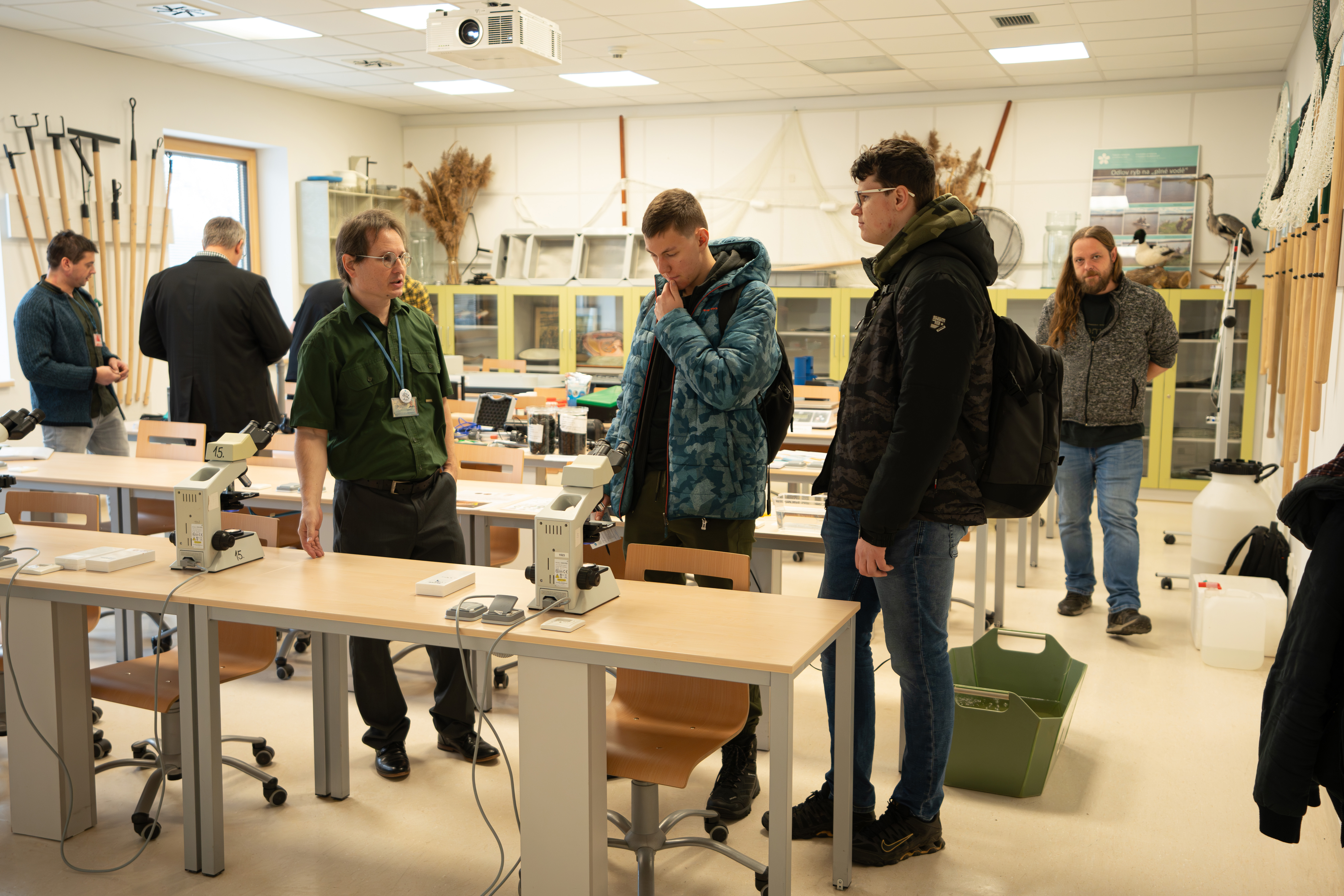
- Foto:

- Foto:

- Foto:
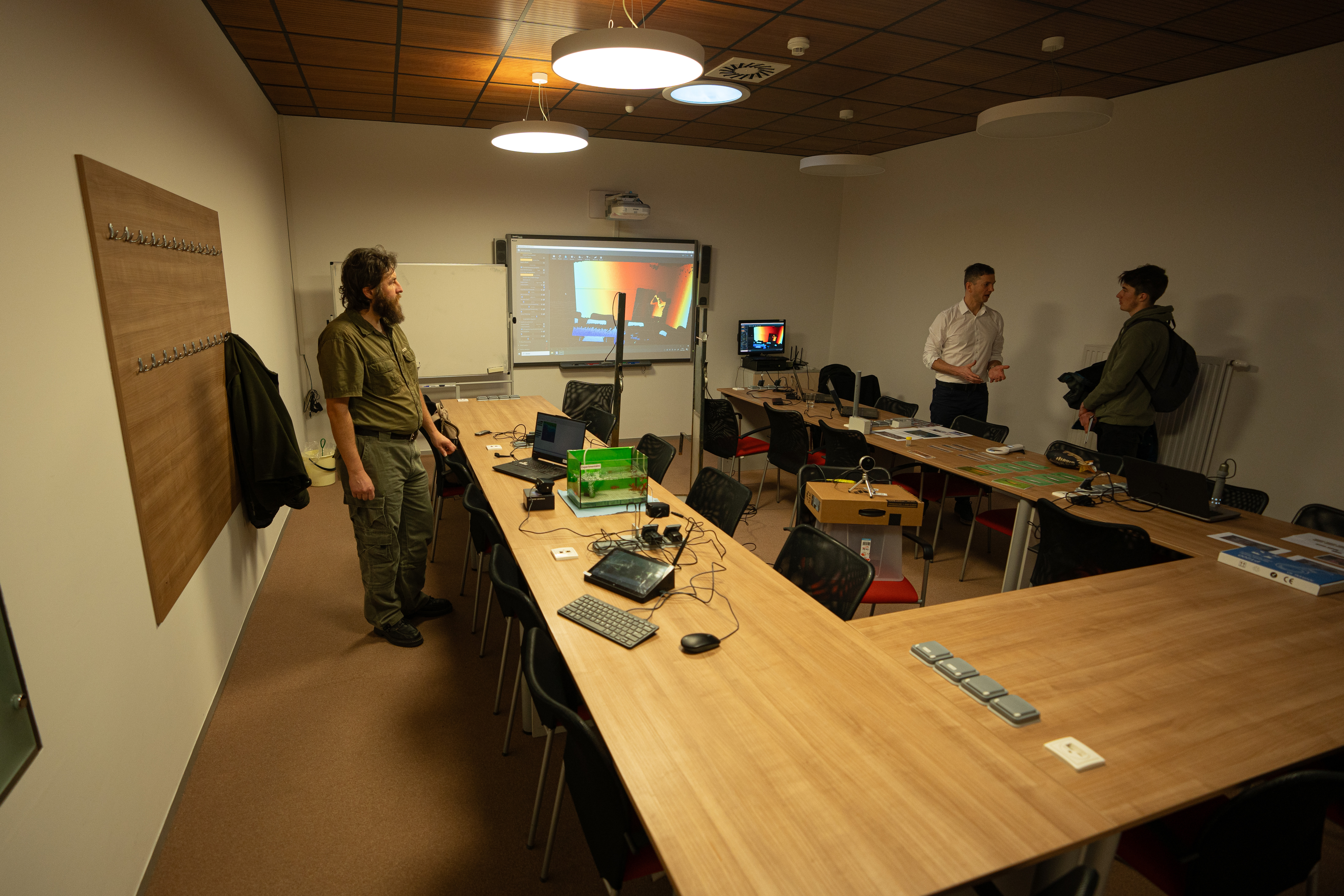
- Foto:
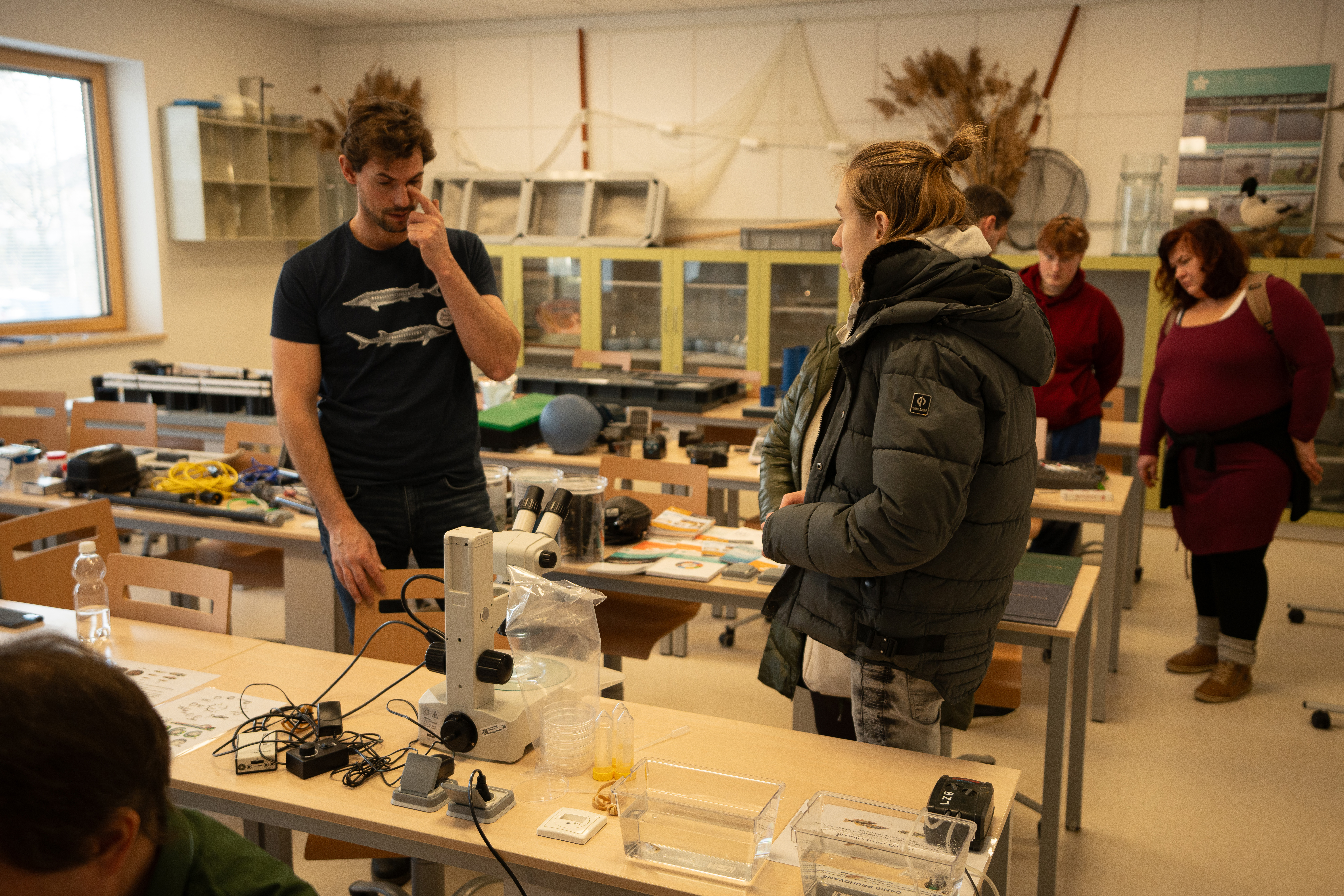
- Foto:
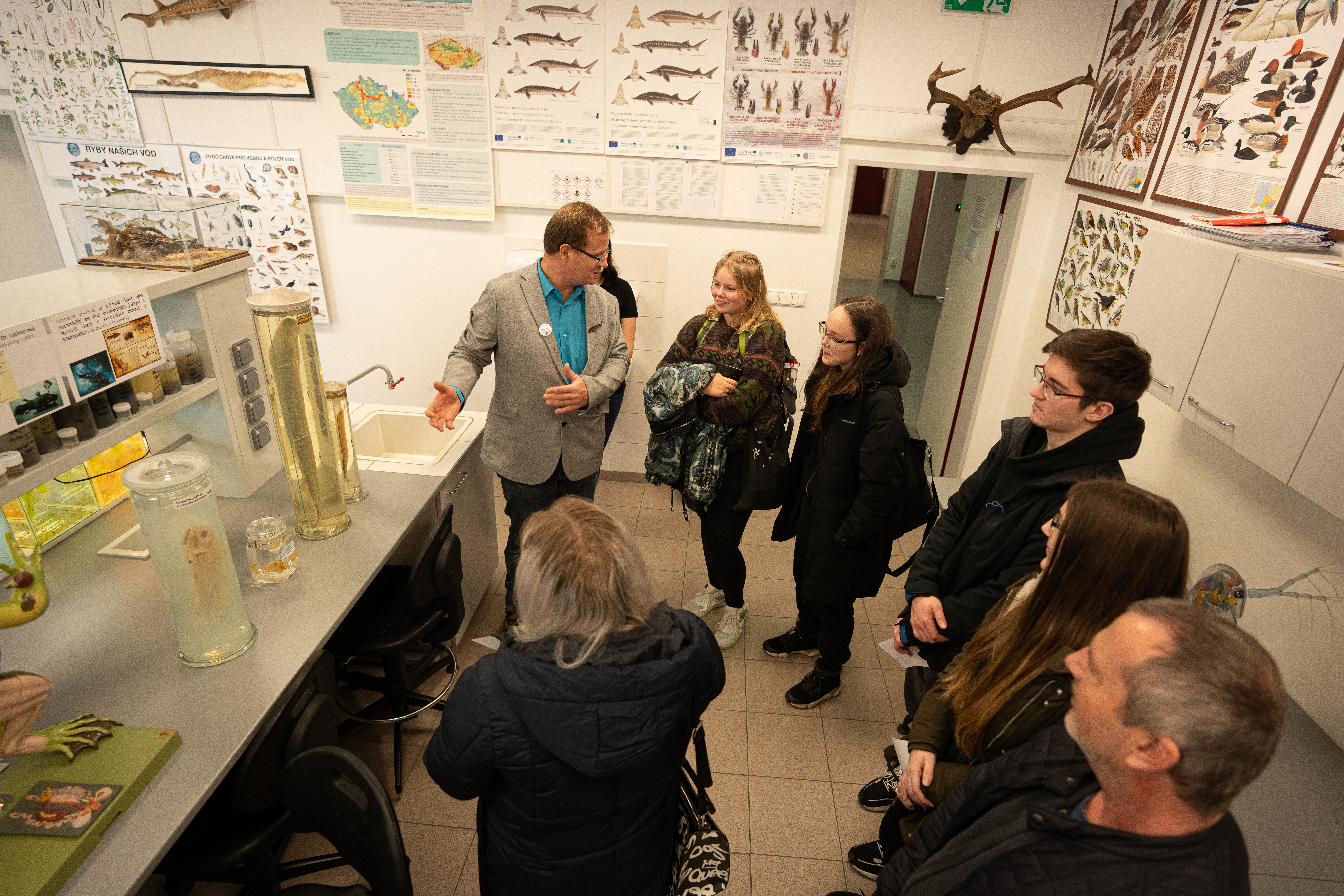
- Foto:
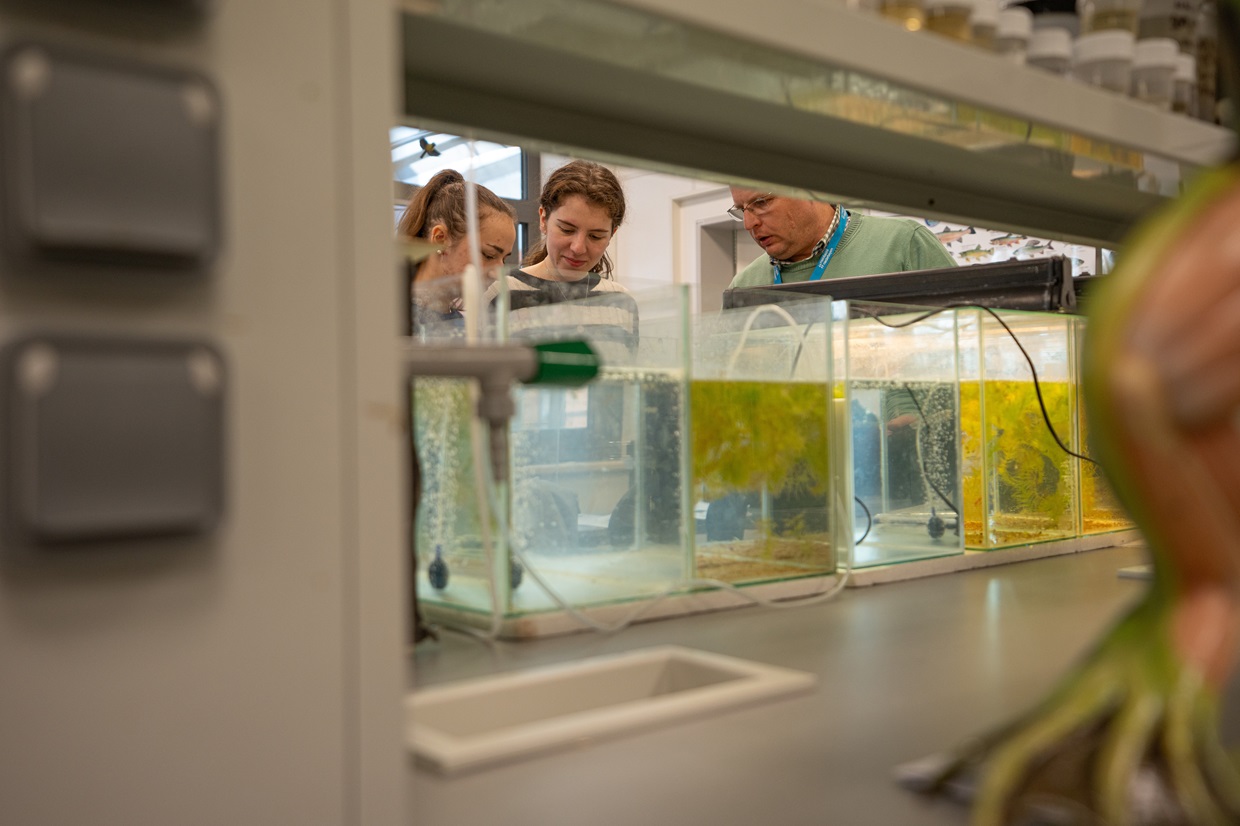
- Foto:
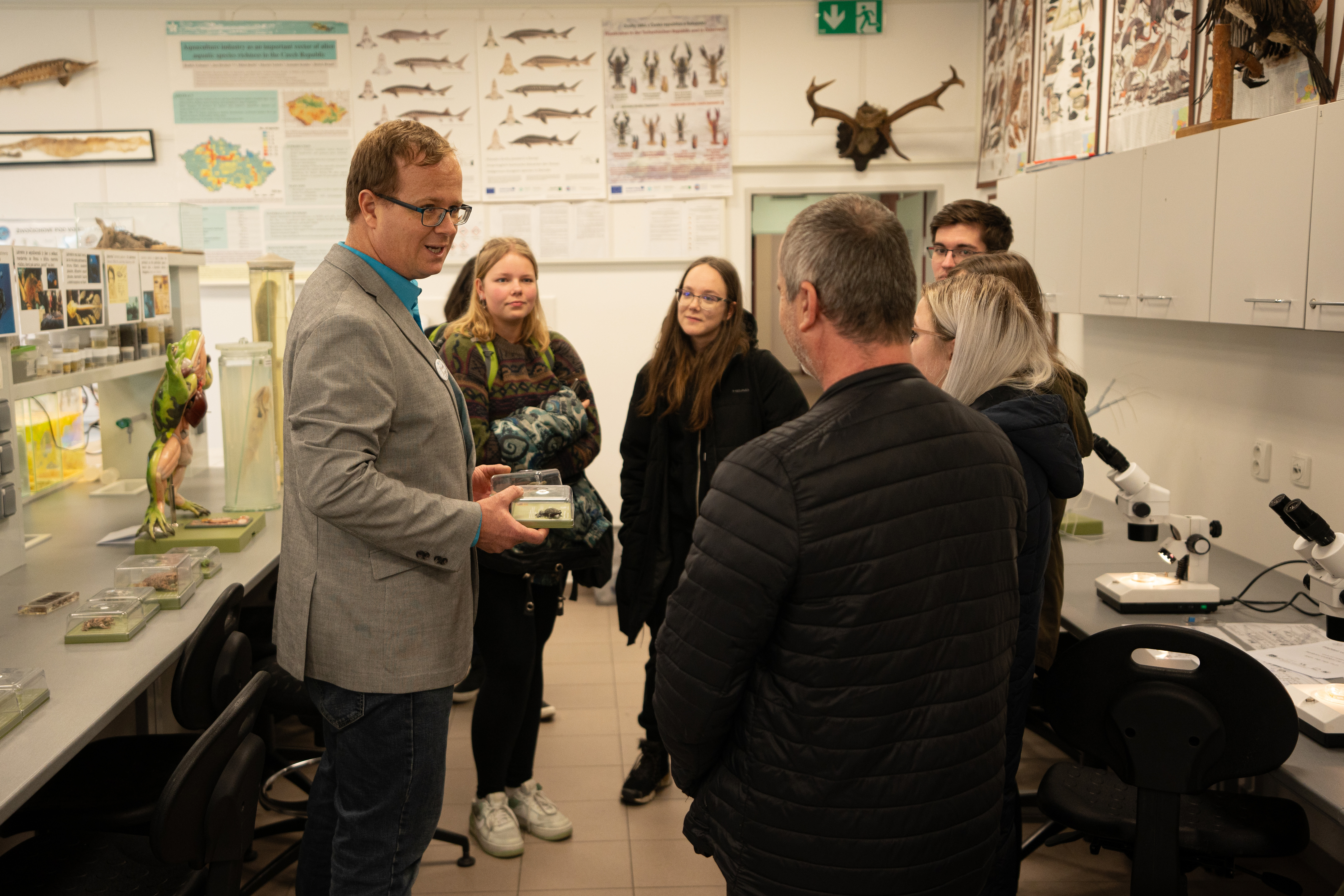
On Friday, 19 January 2024 the University of South Bohemia in České Budějovice opened its doors, allowing the potential applicants to experience all the faculties including the Faculty of Fishery and Protection of Waters.
Located conveniently within the university campus, the ZR building offered the visitors various presentations and activities showcasing the focus areas of the faculty. Visitors had a unique opportunity to try the microscopic techniques utilised to study fish reproduction and other aspects of fishery, to view models of aquatic organisms as well as live fish, or to learn about the application of modern technologies in fishery. The faculty Open Day attracted approximately 50 visitors interested in our study programmes.
A big thank you to all the employees and students who helped to organise the Open Day.
In case you were not able to make it on the Open Day, you can still explore our buildings via the 3D tours.
- Fotogalerie:
- Foto:
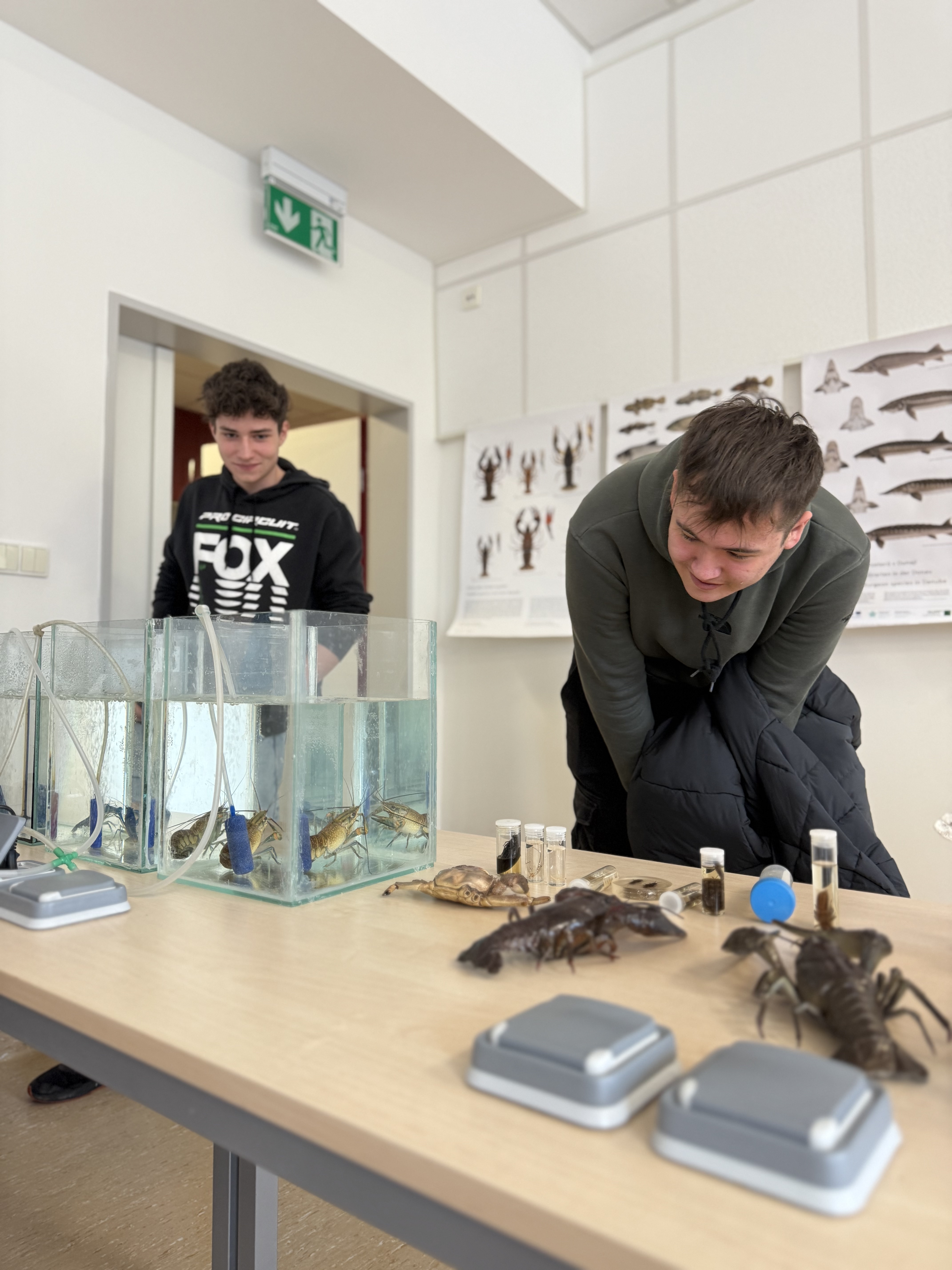
- Foto:
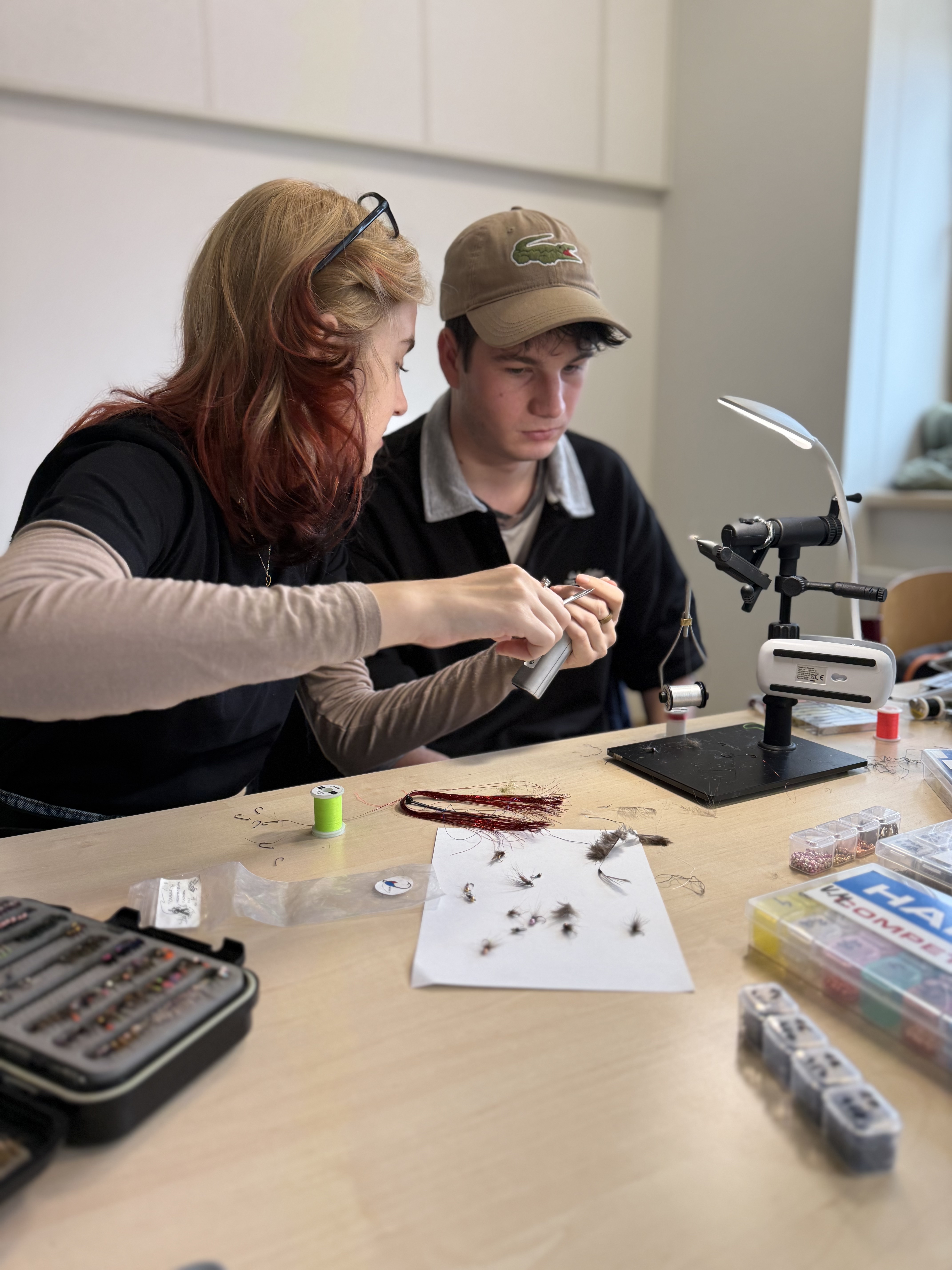
- Foto:
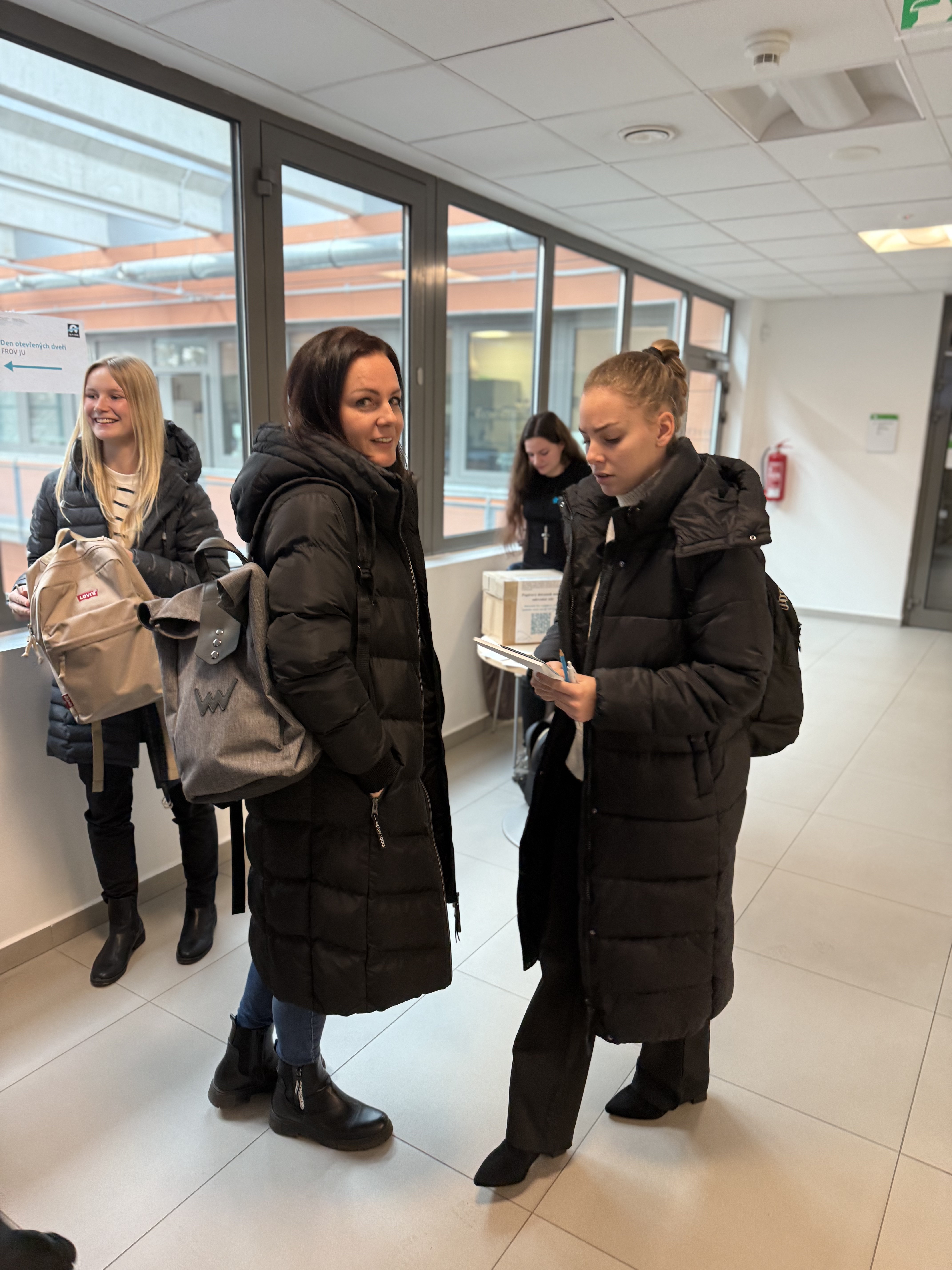
- Foto:
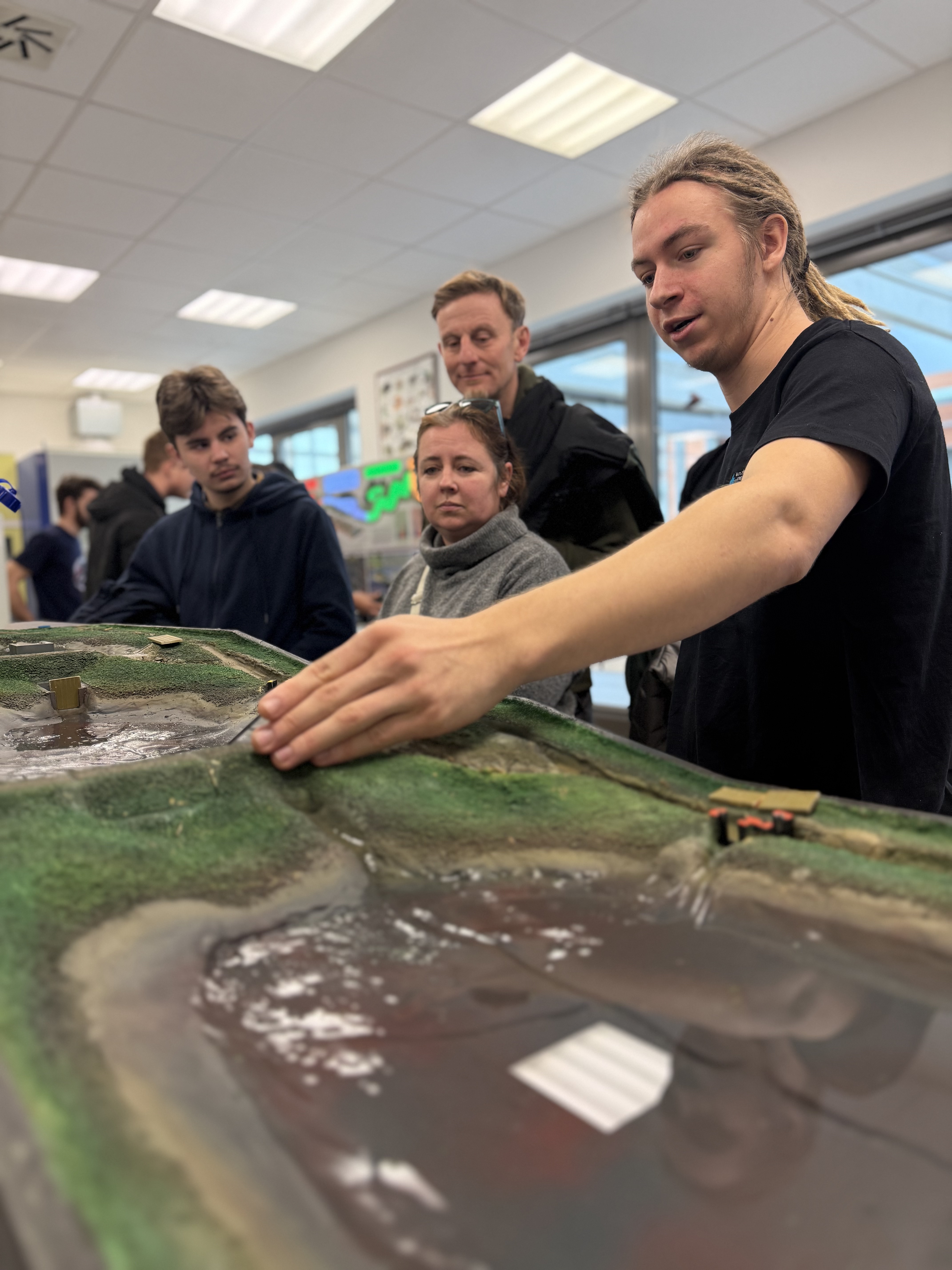
- Foto:

On Friday, 24th January 2025, an Open Day was held at all eight faculties of the University of South Bohemia in České Budějovice, and our faculty was no exception.
Our students, under the guidance of teachers and scientists, prepared a day-long programme to introduce interested students to studying at our university. Demonstrations included:
- Laser shooting range within the subject Hunting
- Fly tying in the Sport Fishing course
- Flame test of metal cations in Chemistry
- Observation of zooplankton under a microscope
- Comparison of egg size of different fish species
- Measurement of water chemistry
- Native and non-native crayfish species
- Fish farming technology in recirculating systems and more
- Aquaponics model
- Machine learning and automated detection methods that enable fish identification, disease diagnosis, analysis of schooling behaviour or assessment of water toxicity by monitoring the proliferation of live unstained cells.
Practical demonstrations were complemented by the sale of books and promotional materials on fisheries topics.
There was also a tasting of traditional fish products from our Faculty's Processing Unit and Shop with Fish and Aquaculture Products
The Open Day attracted about 65 people interested in studying. We would like to thank all the staff and students who participated in the preparation and also all those interested in studying at the Faculty of Fisheries and Aquatic Protection of JU.
📸 Video a photos from this year's edition can be found on our social networks.
Do you want to know, what our faculty looks like? Do you wonder what you can study at our faculty? So come to visit us on Friday, January 20, 2023.
More information and programme of the open day you can find here.
On 19th March 2024, the future dean of the Faculty of Fisheries and Protection of Waters of the University of South Bohemia in České Budějovice (FFPW USB), prof. Tomáš Policar together with the rector prof. Kanat Tireuov, all deans of the faculties of the S. Seifullin Kazakh Agrotechnical Research University (KATRU) and the academic staff of the Faculty of Forestry, Wildlife and Environmental ceremonially opened the unique Kazakh-Czech research aquaculture center, which will be part of the mentioned university in Astana. All participants of the ceremony were very pleased that Mr. Ambassador from the Czech Republic Ing. Pavol Šepeľák participated to open and visit of the center. The director of the center will be our colleague MSc. Zhaxygali B. Kuanchaleyev. With his research team, we plan to implement a whole series of research projects with high application potential related to the innovation of aquaculture in Kazakhstan. The aim of planned projects is more frequently use the technology of recirculating aquaculture systems (RAS) in the practice of fishery companies for the high-quality and balanced production of pikeperch, rainbow trout, sturgeons, narrow-clawed crayfish, and probably also to start conservation program for Siberian taimen. In addition, we also plan to teach Kazakh master's and doctoral students at FFPW USB. We believe that within the framework of the mentioned future cooperation we will effectively use the established cooperation with the Czech Embassy in Astana, specifically with JUDr. Markéta Pěčková, who supports Czech agriculture innovative and commercial activities in Kazakhstan.
- Fotogalerie:
- Foto:

An international research team involving experts from Germany, Austria, and Hungary, led by Martin Bláha and Antonín Kouba from the Faculty of Fisheries and Protection of Waters, University of South Bohemia in České Budějovice, has documented the first occurrences of the oriental river prawn (Macrobrachium nipponense) in Central Europe. This non-native freshwater shrimp, native to East Asia, was first discovered in 2023 in Racklau Harbour in Passau, Germany, and the Szigetköz floodplain near Lipót, Hungary. In both locations, multiple size classes were observed, including ovigerous females, indicating that self-sustaining populations have been established.
These findings mark a substantial leap from the species' known European non-native range, discovered recently in the lower Danube, and raise concerns about its potential spread and ecological impacts. Oriental river prawn is known for its broad environmental tolerance, fast growth, and high reproductive output, making it a high-risk invasive species. Its introduction is suspected to be linked to the pet trade or ballast water transport, whereas the natural upstream spread is considered of secondary importance.
Given the species' potential to disrupt native biodiversity, we call for immediate attention to detailed monitoring and targeted research. Environmental education, responsible pet ownership, and improved biosecurity measures are key to preventing further spread.
Detailed information can be found in the original article:
Bláha, M., Schrottenbaum, A., Weiperth, A., Hammerschmied, U., Graf, G., Csányi, B., Patoka, J., Kouba, A., 2025. Macrobrachium nipponense continues to spread in the Danube: first records in Germany and Hungary. Knowledge and Management of Aquatic Ecosystems, 426, 9. https://doi.org/10.1051/kmae/2025004
Do 1. srpna 2024 je možné podávat přihlášky do bakalářských studijních programu Ochrana vod a Rybářství. Podrobné informace naleznete zde.
Dne 19. 3. 2024 budoucí děkan Fakulty rybářství a ochrany vod Jihočeské univerzity v Českých Budějovicích (FROV JU) prof. Tomáš Policar společně s panem rektorem prof. Kanat Tireuov, všemi děkany fakult kazašské S. Seifullin Zemědělsko-technické Univerzity a akademickými pracovníky Lesnické a přírodovědné fakulty slavnostně otevřeli a zahájili činnost unikátního Kazašsko-českého výzkumného akvakulturního centra, které bude součástí zmíněné univerzity v Astaně. Všichni zúčastnění byli velmi potěšeni, že slavnostního otevření a prohlídky zmíněného centra se zúčastnil pan velvyslanec z České republiky Ing. Pavol Šepeľák. Ředitelem centra bude náš spolupracovník a kolega MSc. Zhaxygali B. Kuanchaleyev. S jeho vědeckým týmem plánujeme realizovat celou řadu výzkumných projektů s vysokým aplikačním potencionálem týkající se inovace akvakultury v Kazachstánu s cílem většího využití technologií recirkulačních akvakulturních systémů (RAS) v praxi rybářských podniků a tím k vyrovnané produkci candáta obecného, pstruha duhového, jeseterovitých ryb, raka bahenního a pravděpodobně také k záchraně tajmena sibiřského. Kromě toho plánujeme výuku kazašských magisterských a doktorských studentů na FROV JU. Věříme, že v rámci zmíněné budoucí spolupráce efektivně využijeme navázanou spolupráci s českou ambasádou v Astaně a to konkrétně s JUDr. Markétou Pěčkovou, která v Kazachstánu podporuje české inovační a komerční aktivity realizované v zemědělství.























